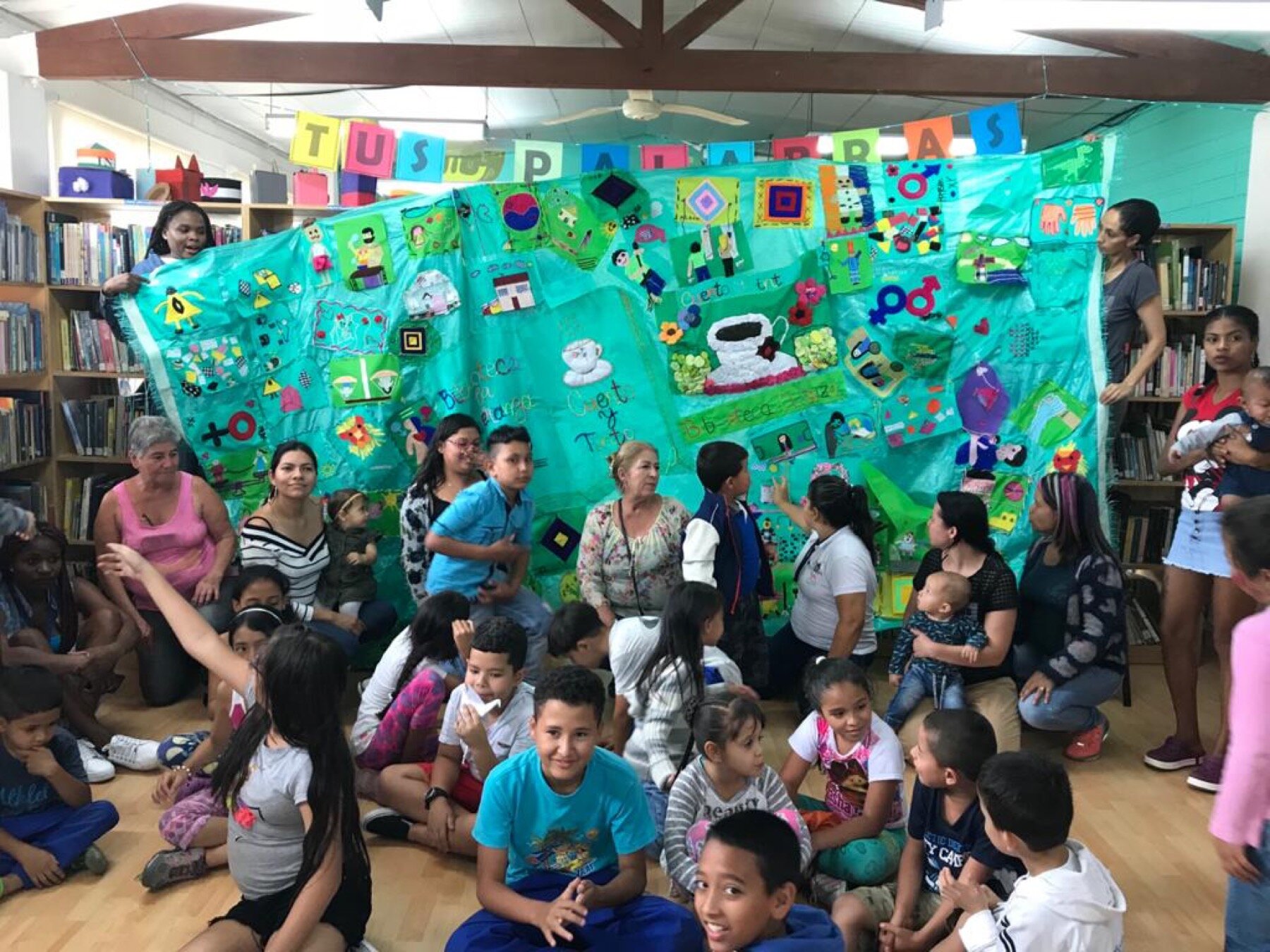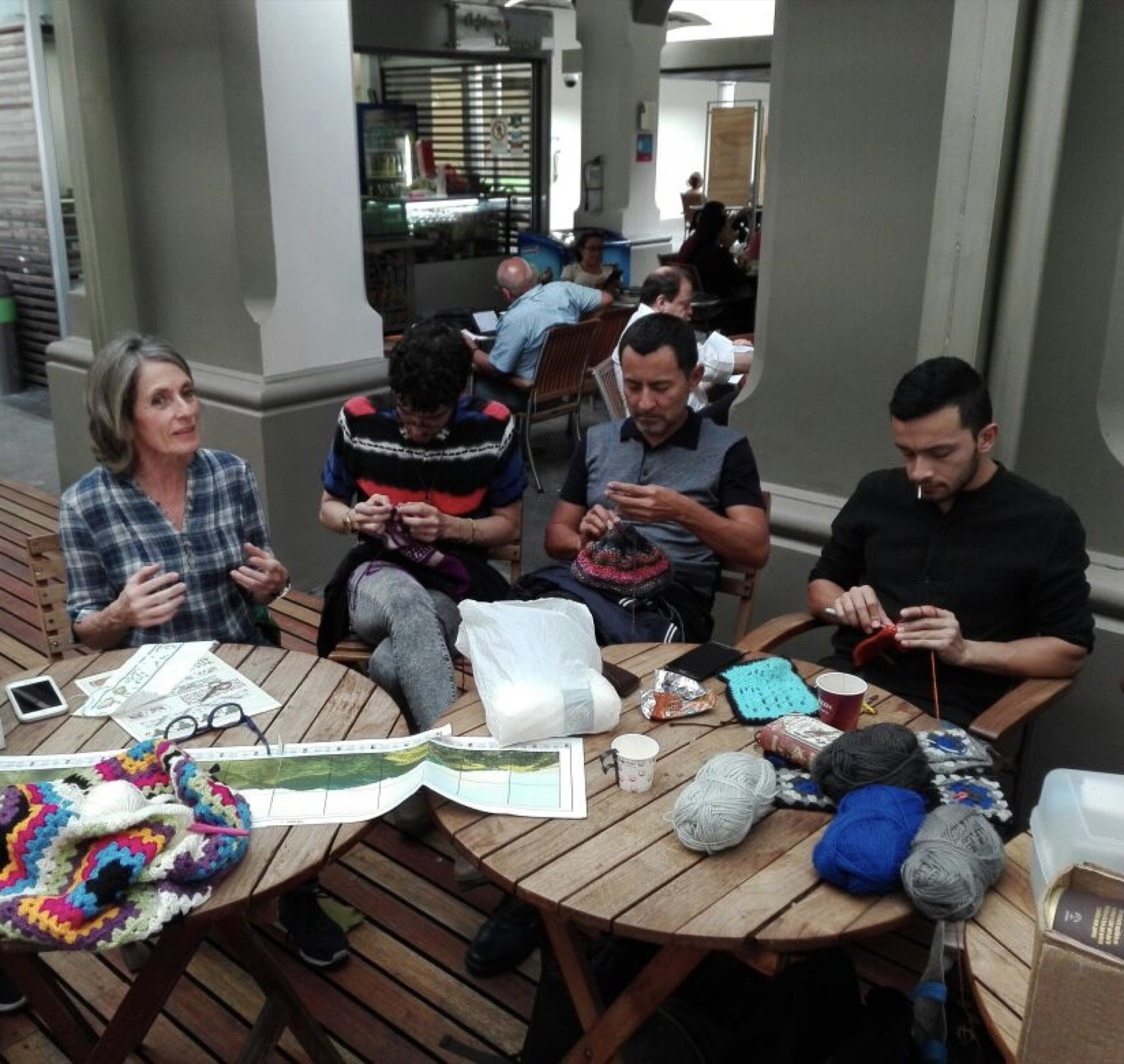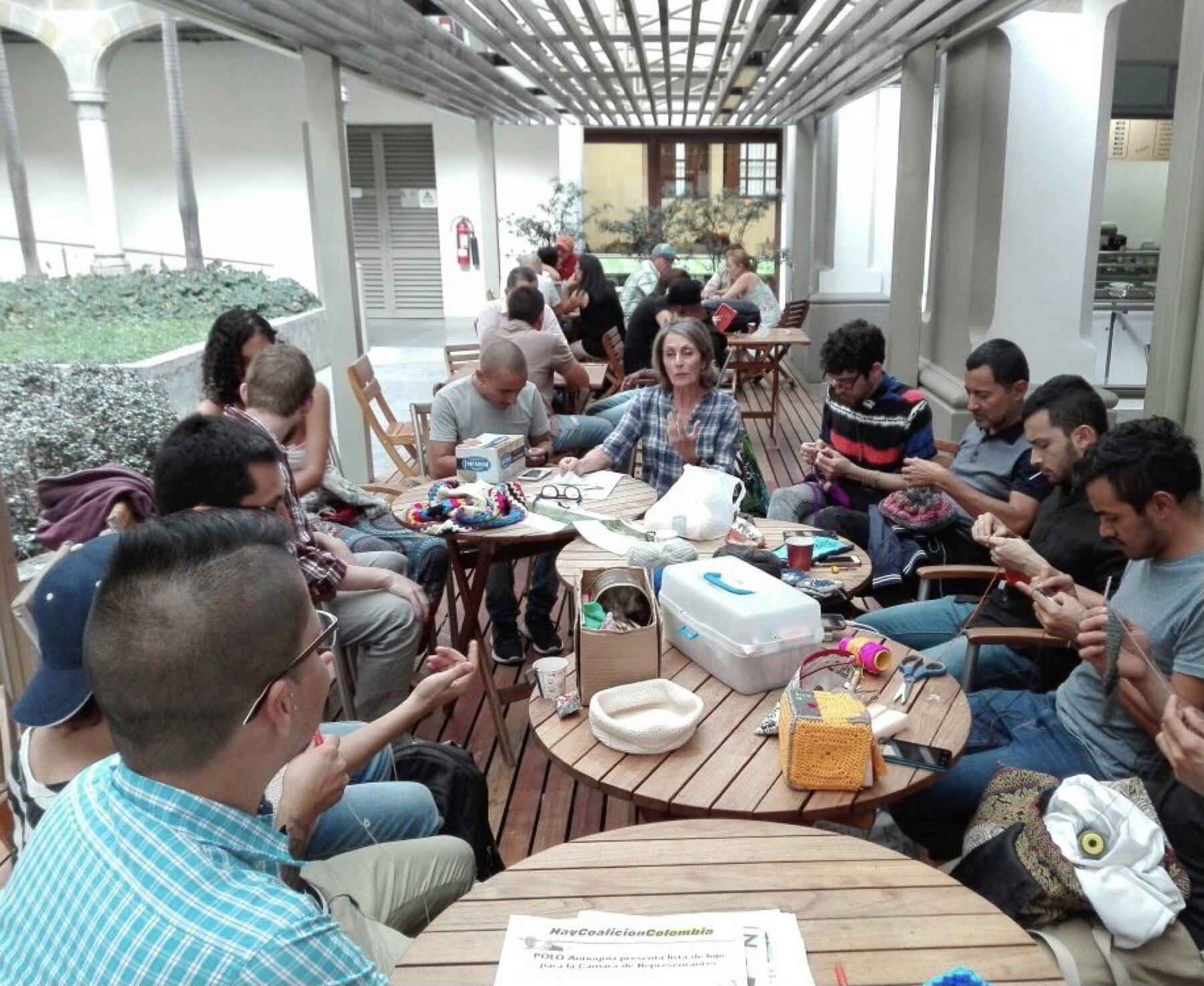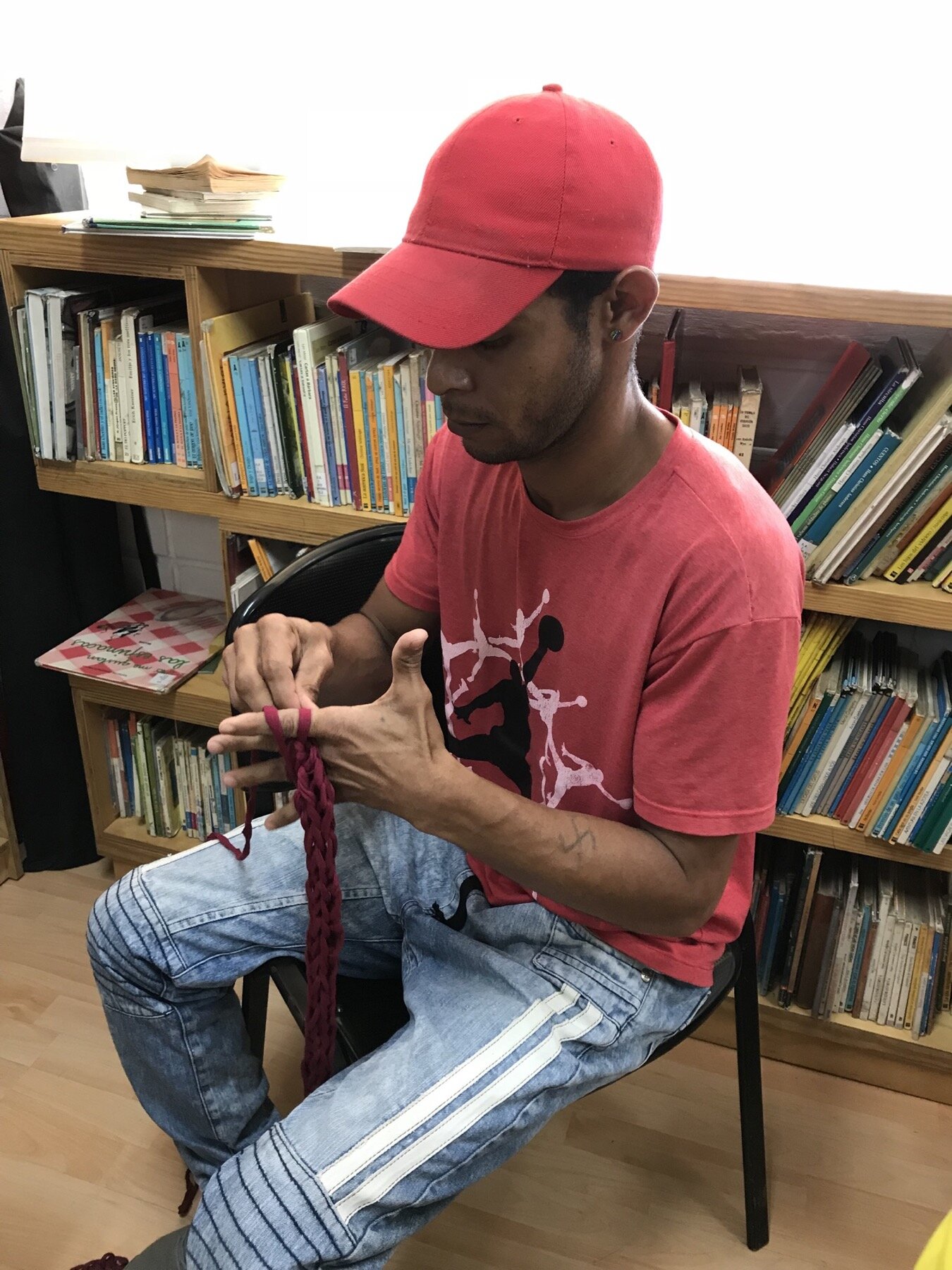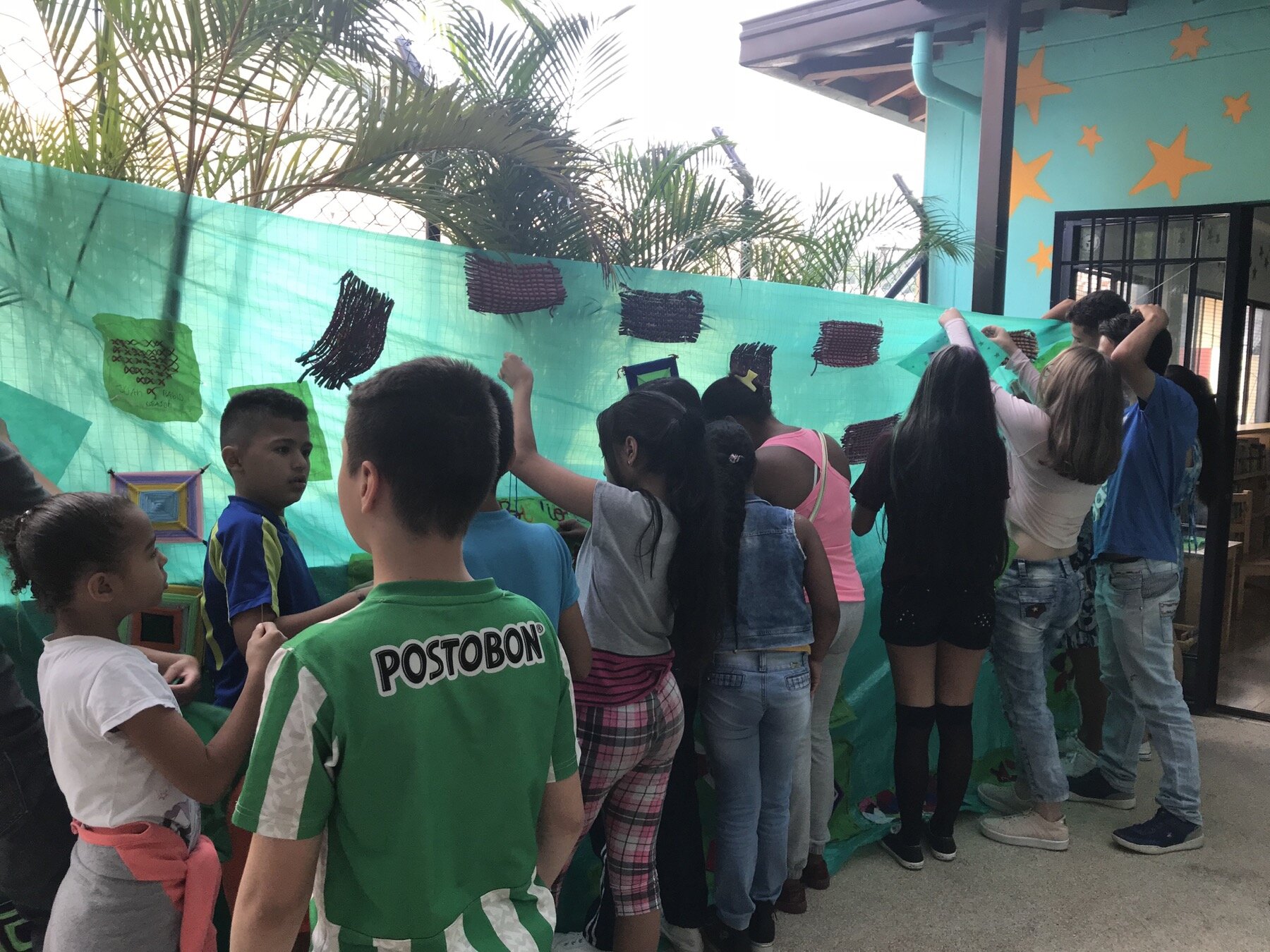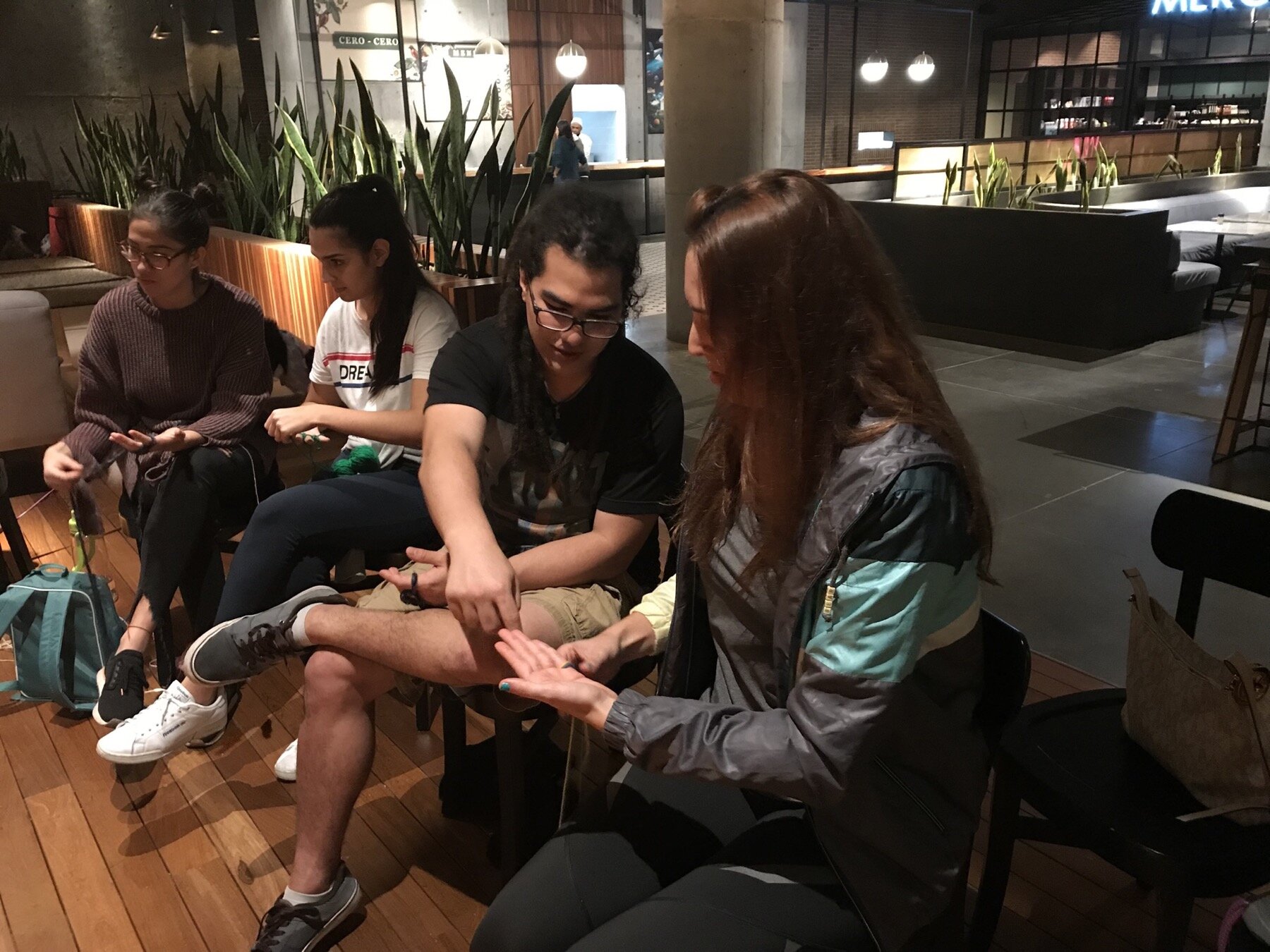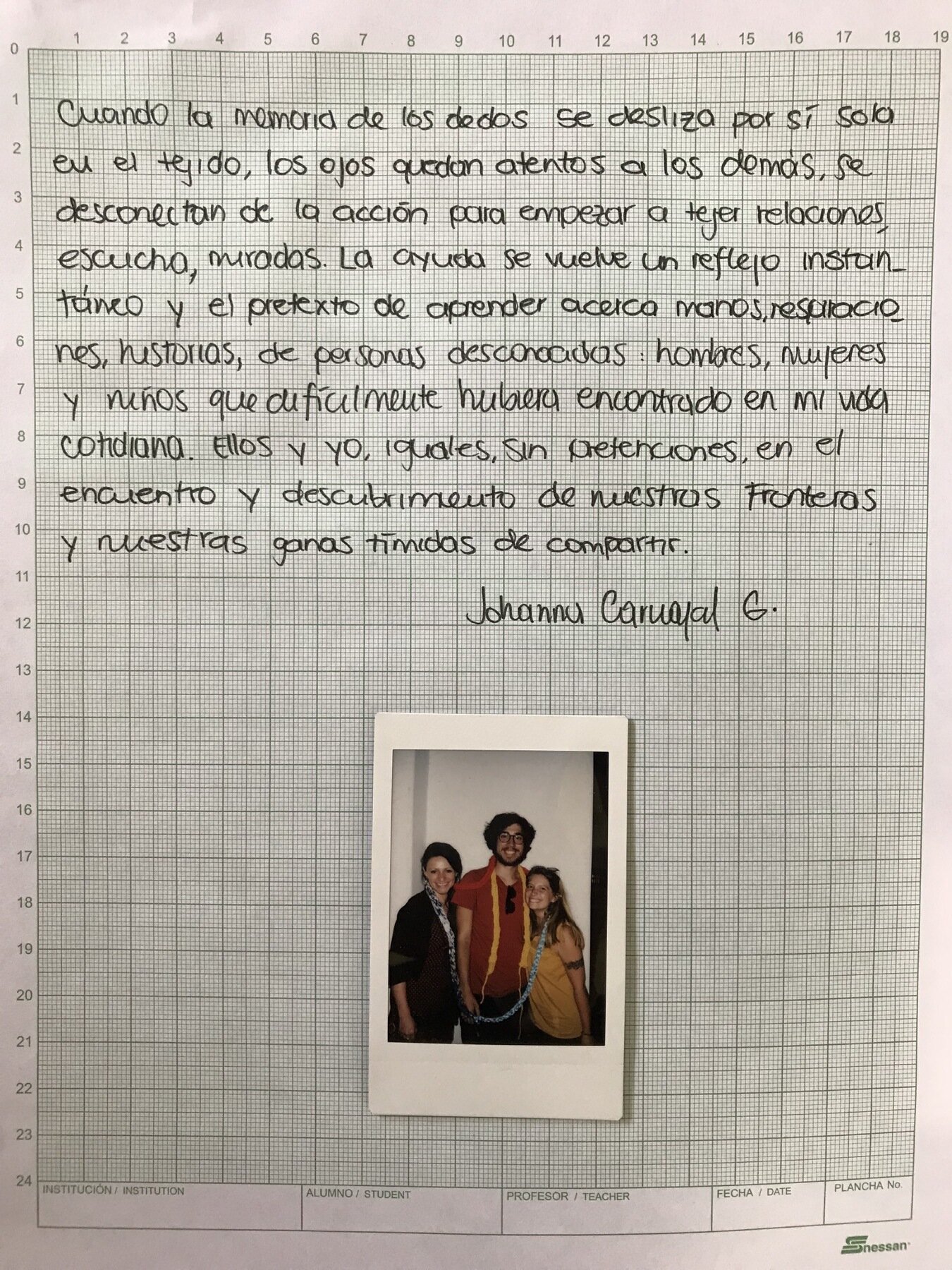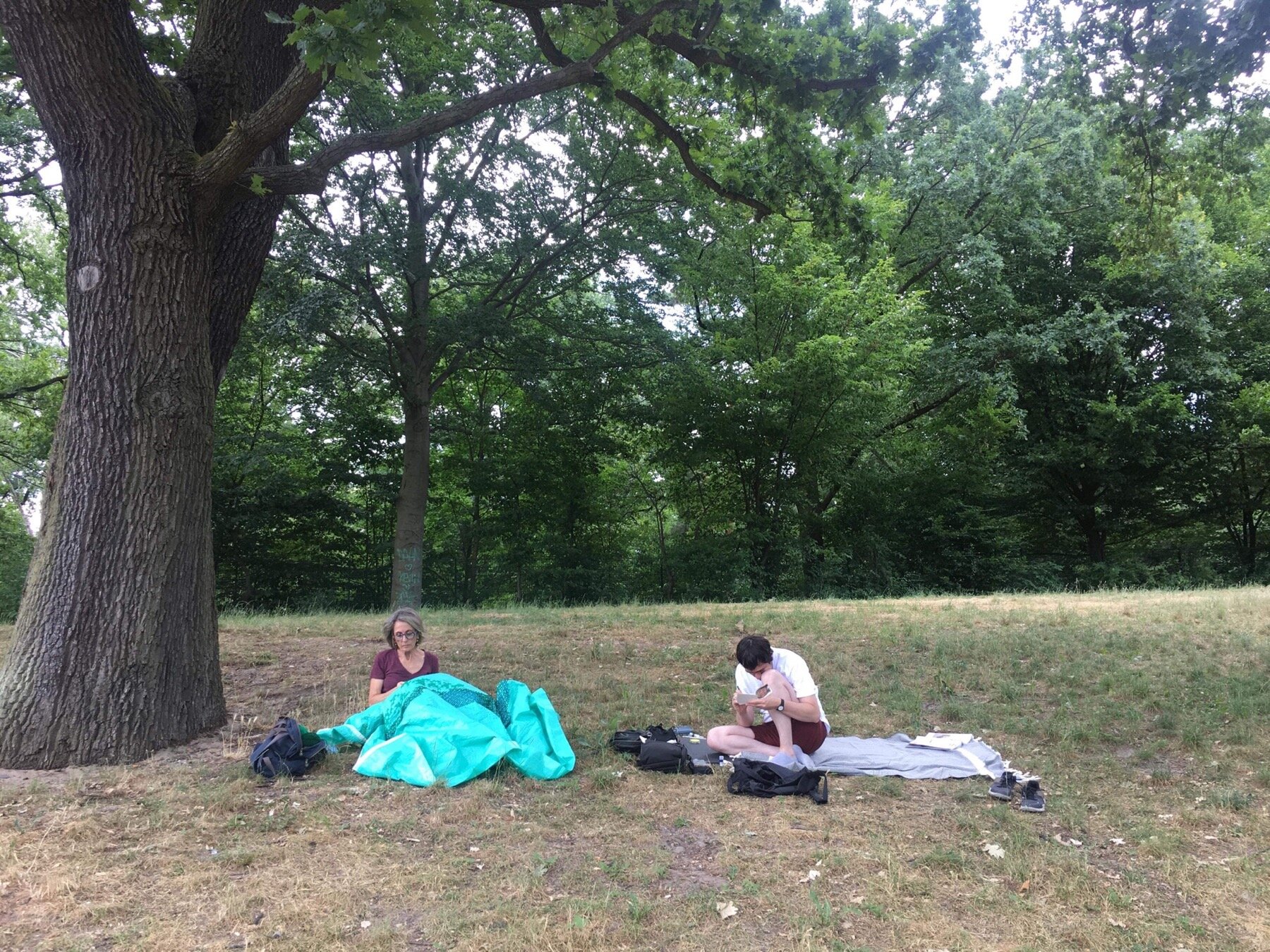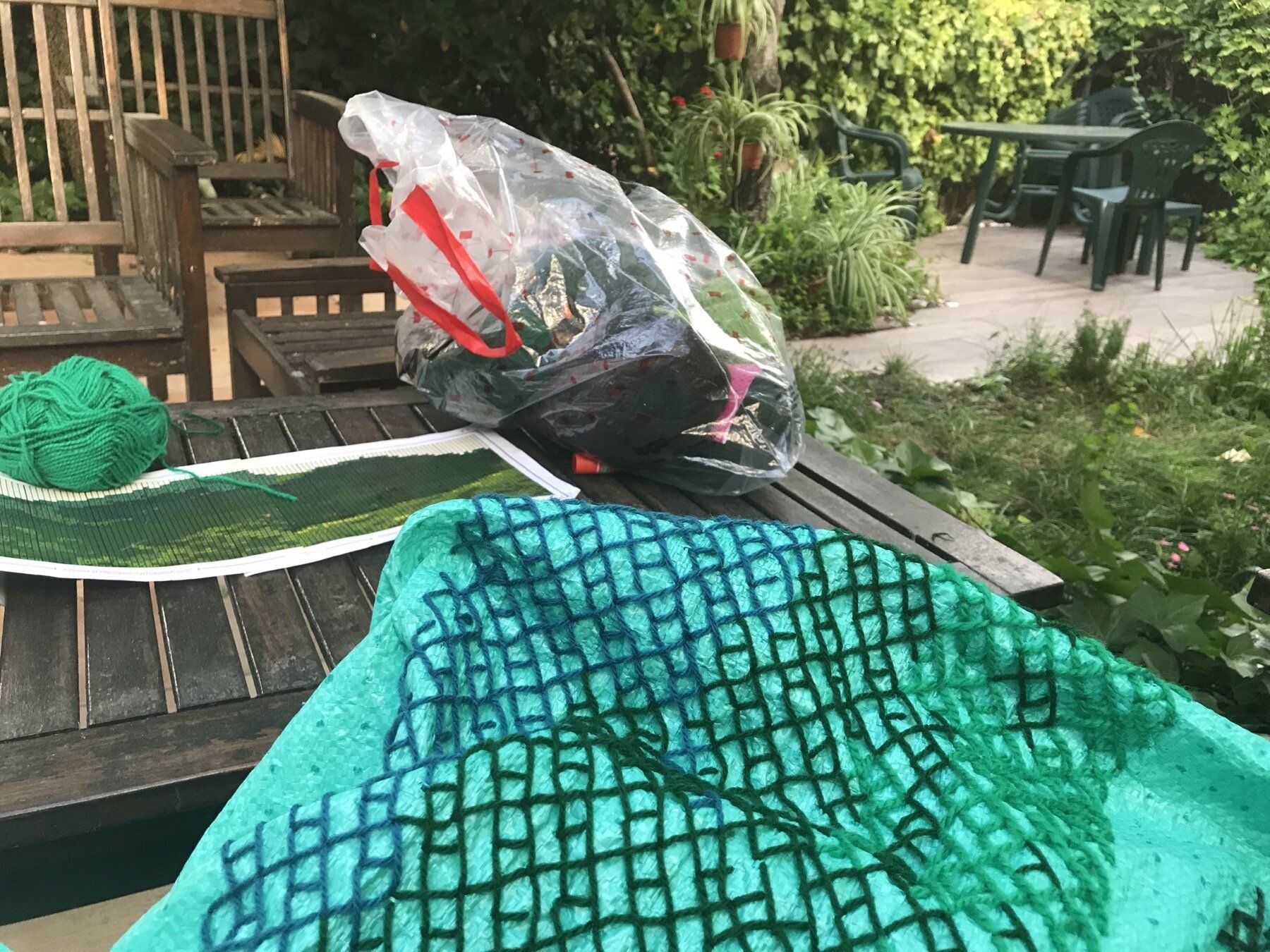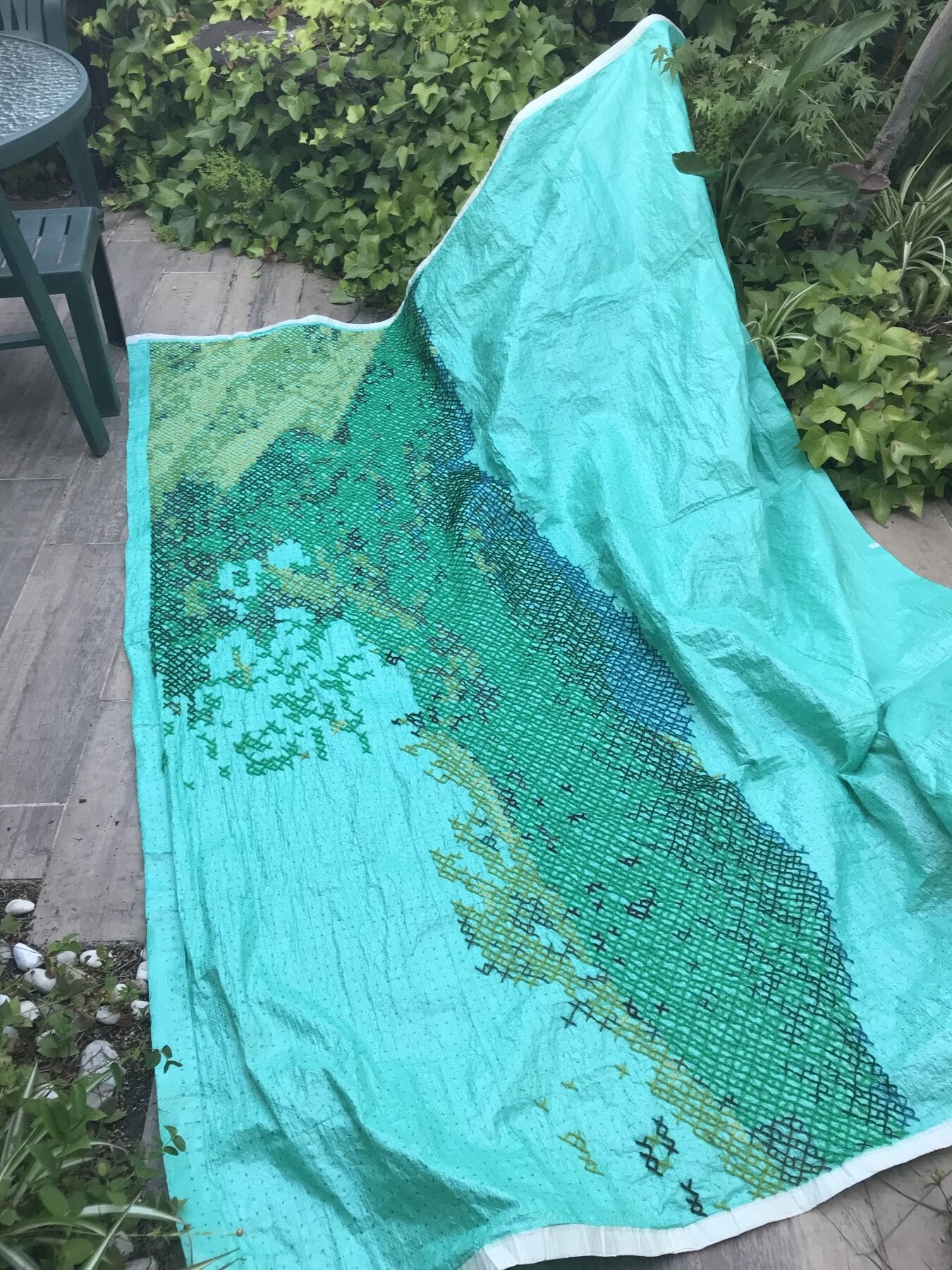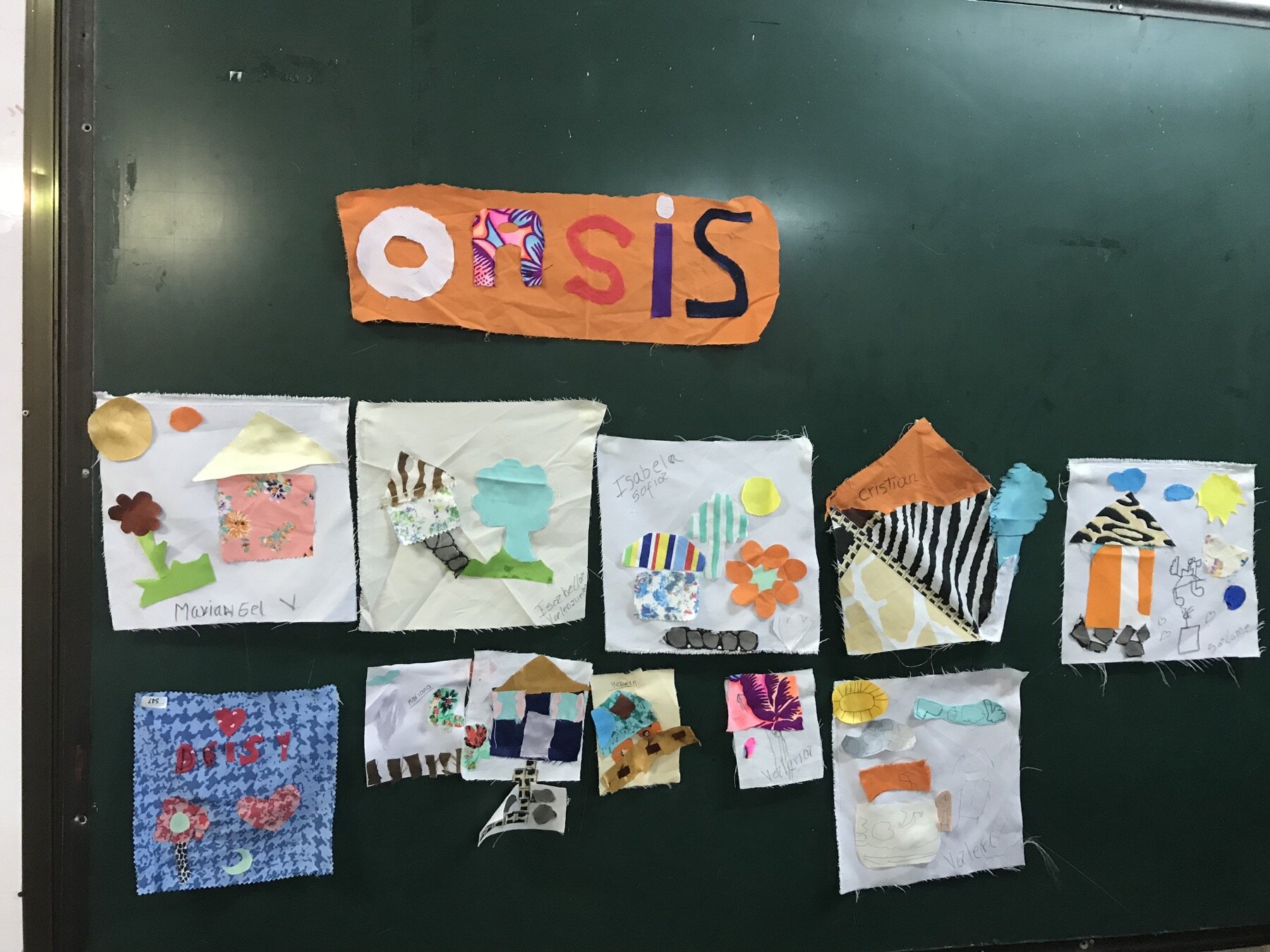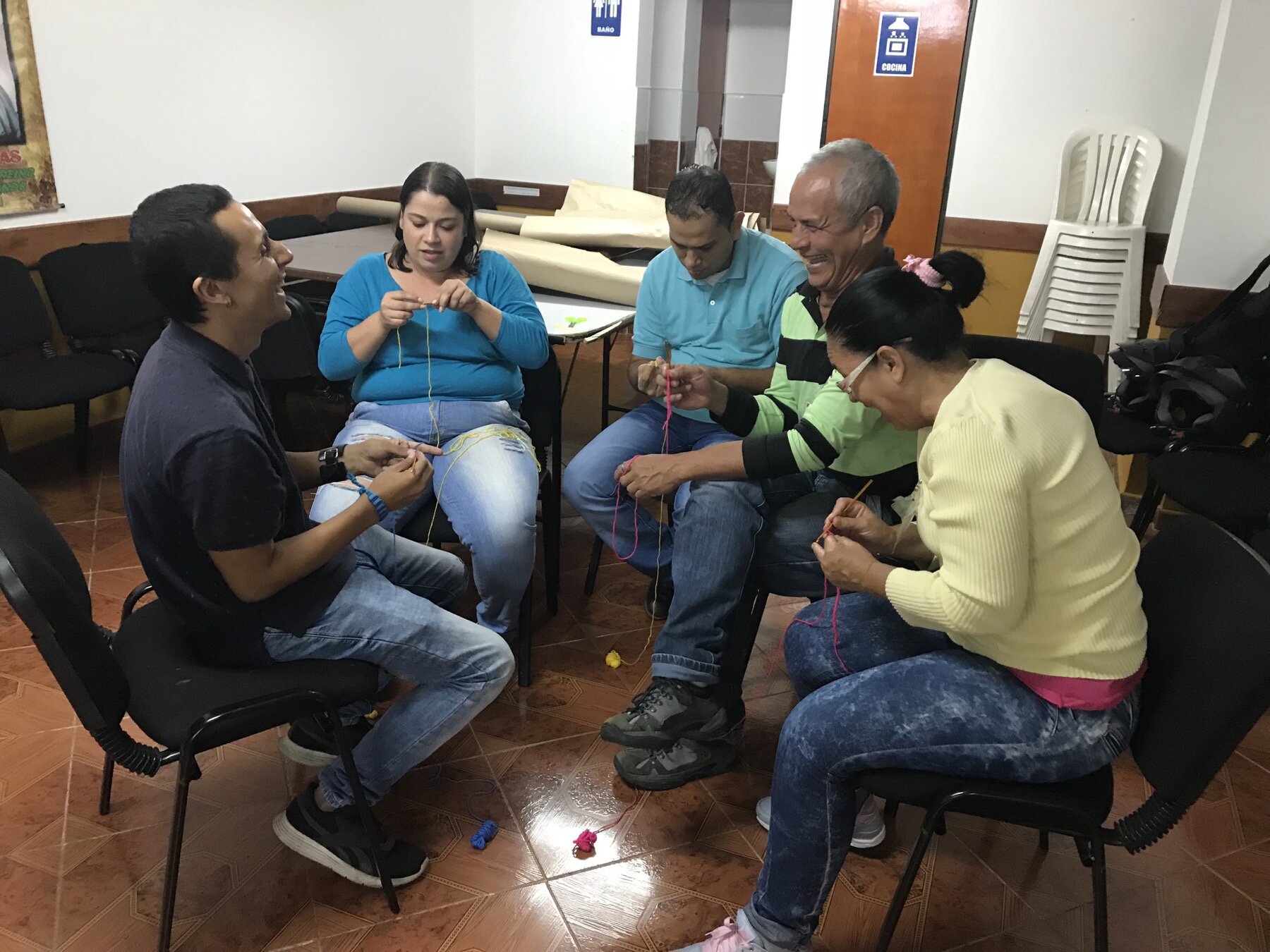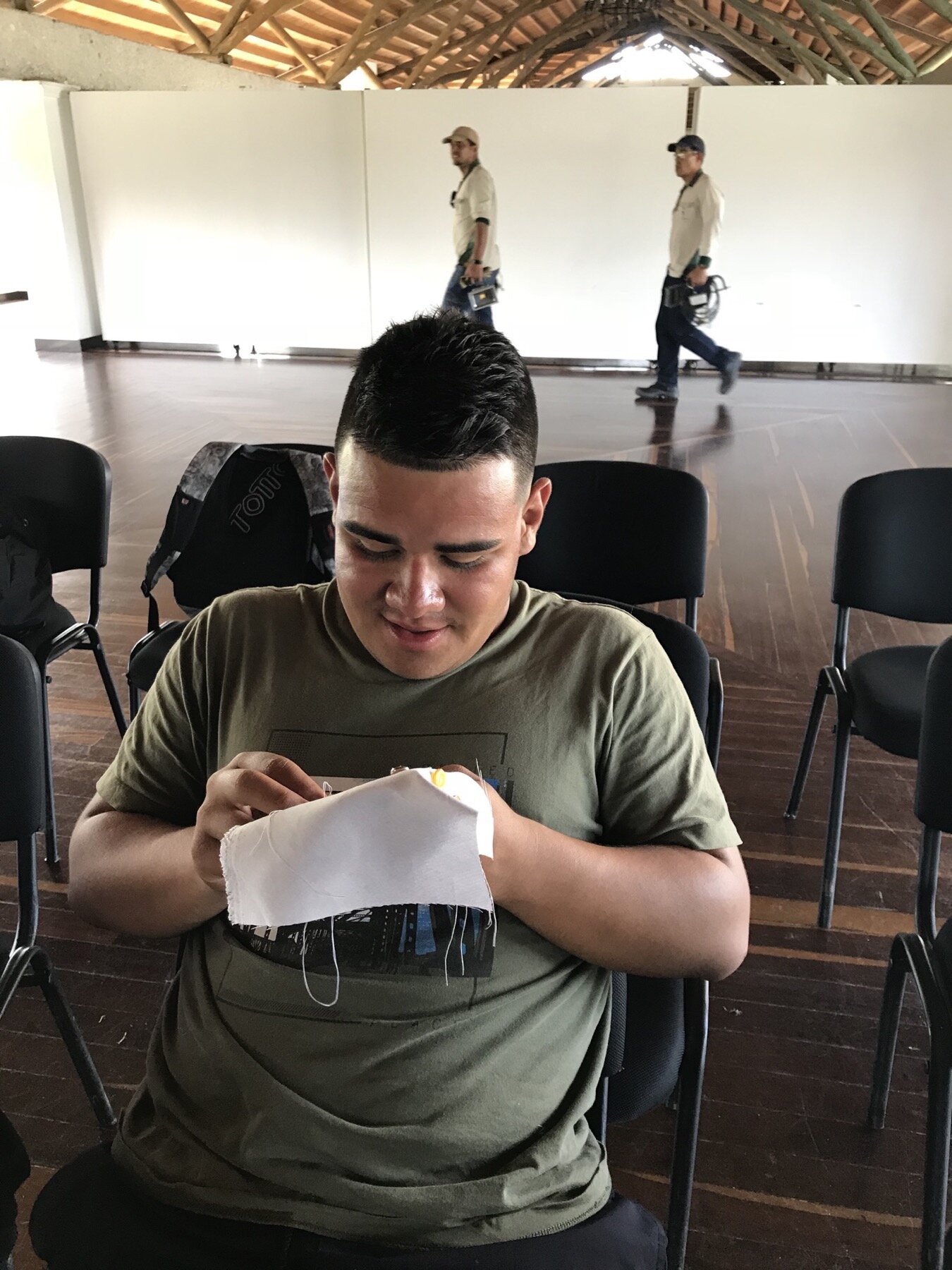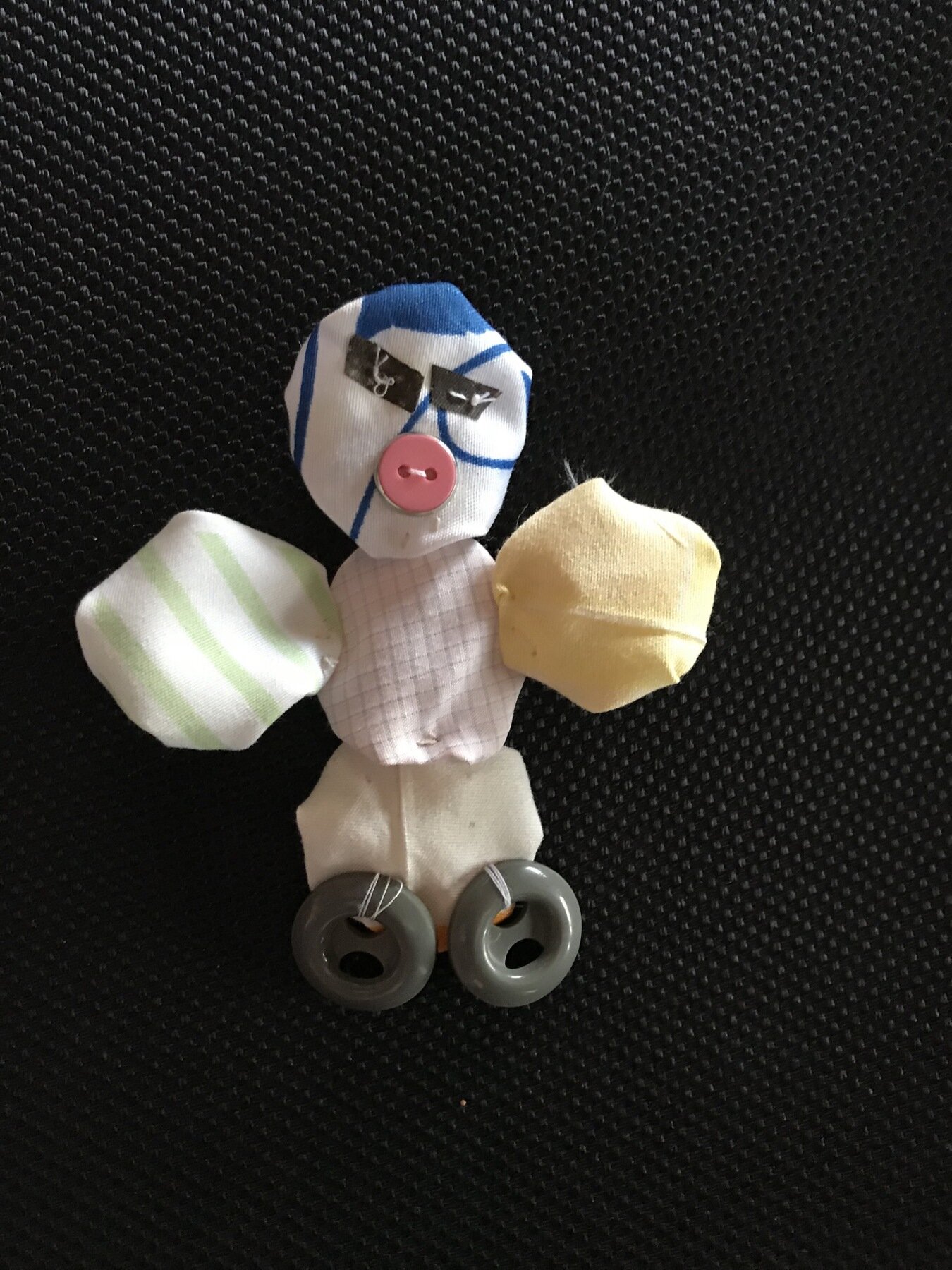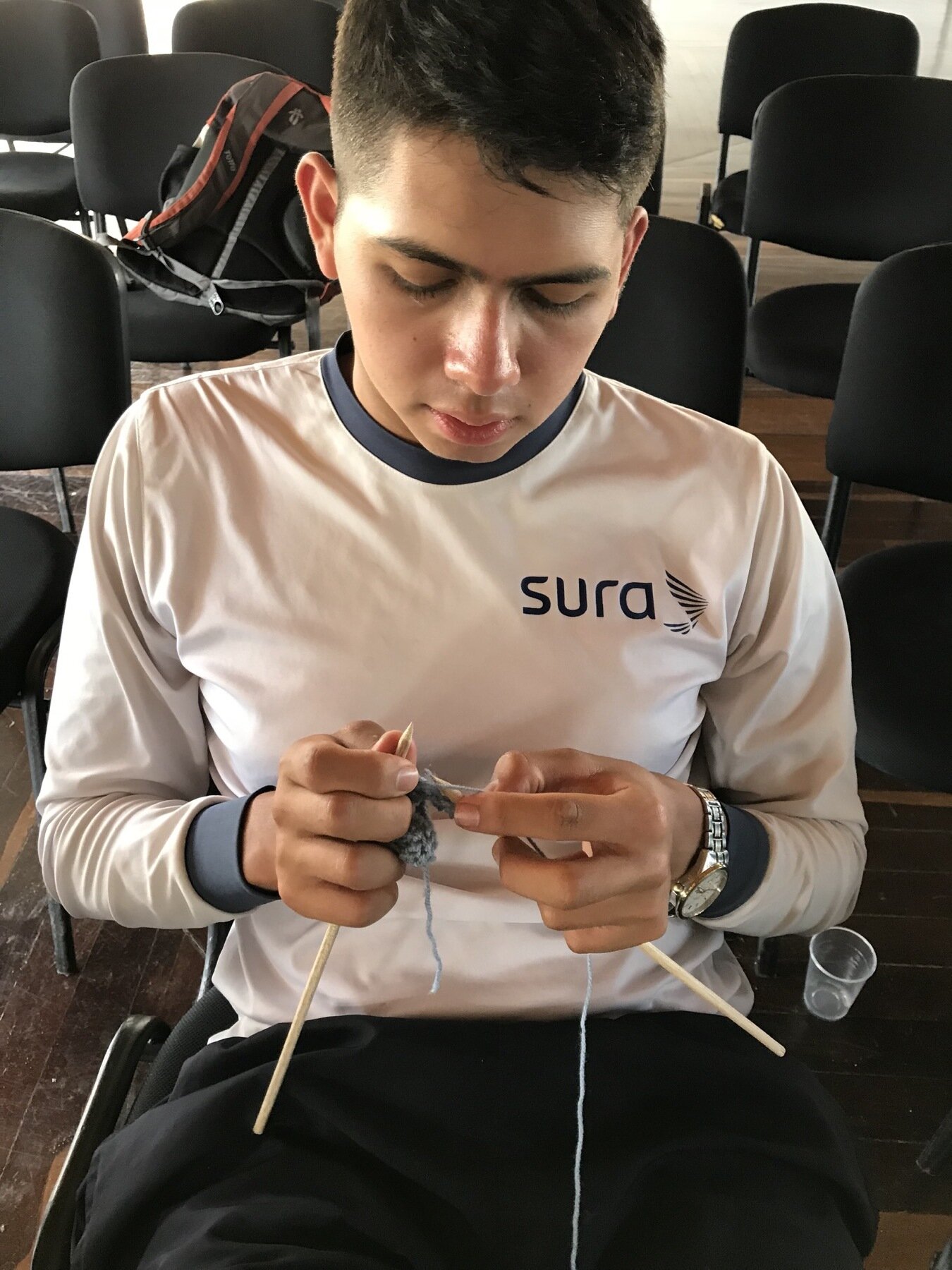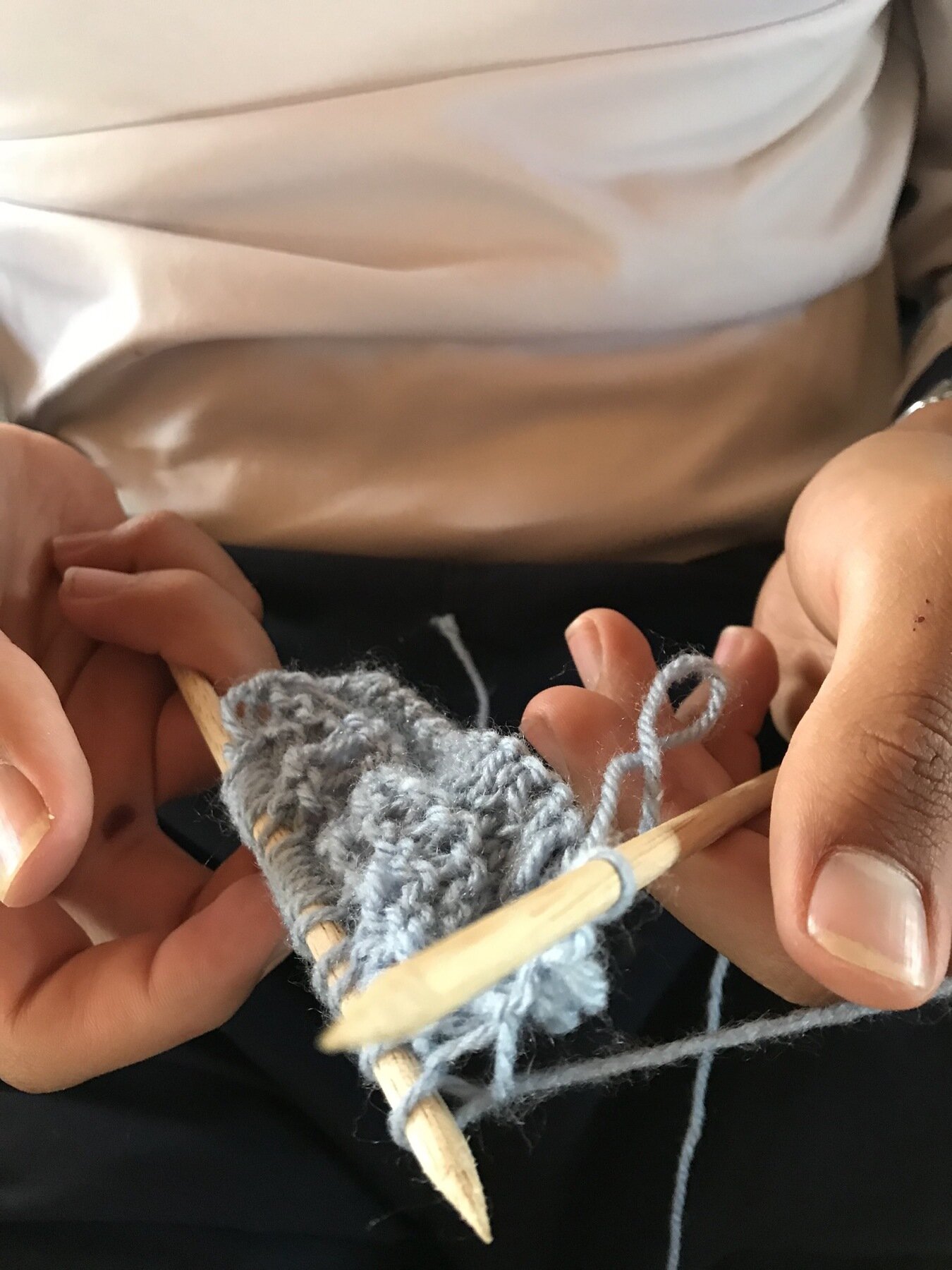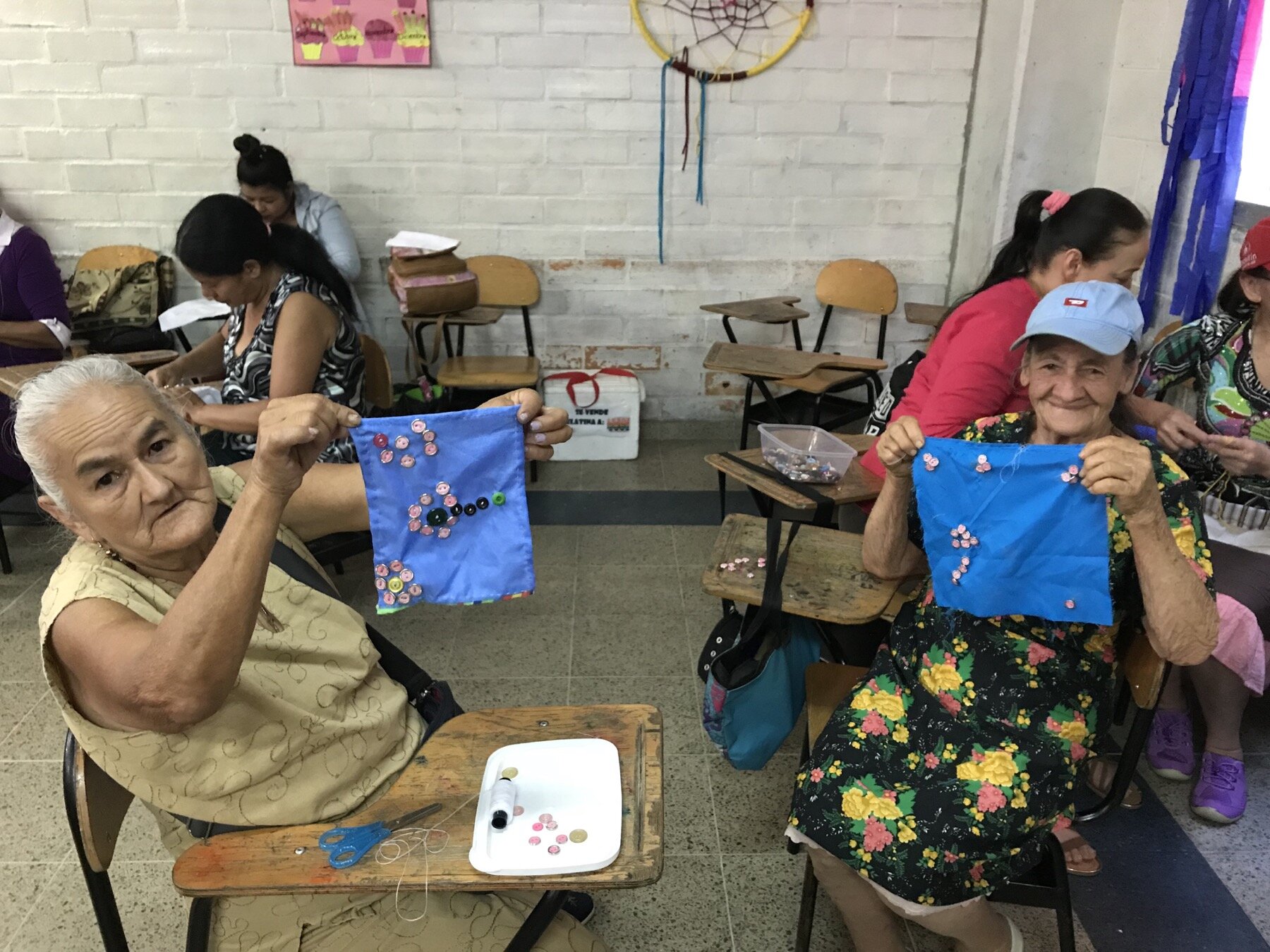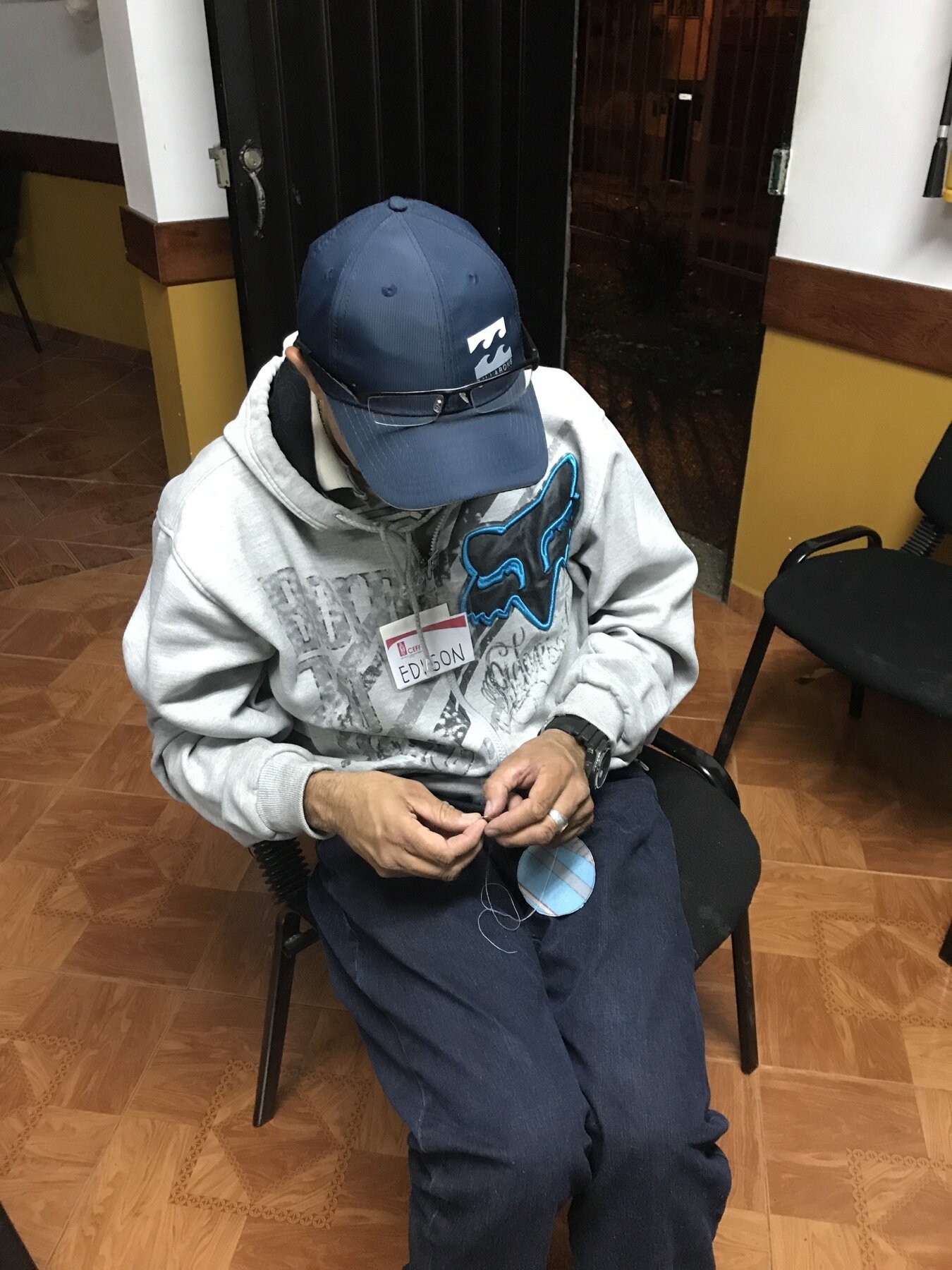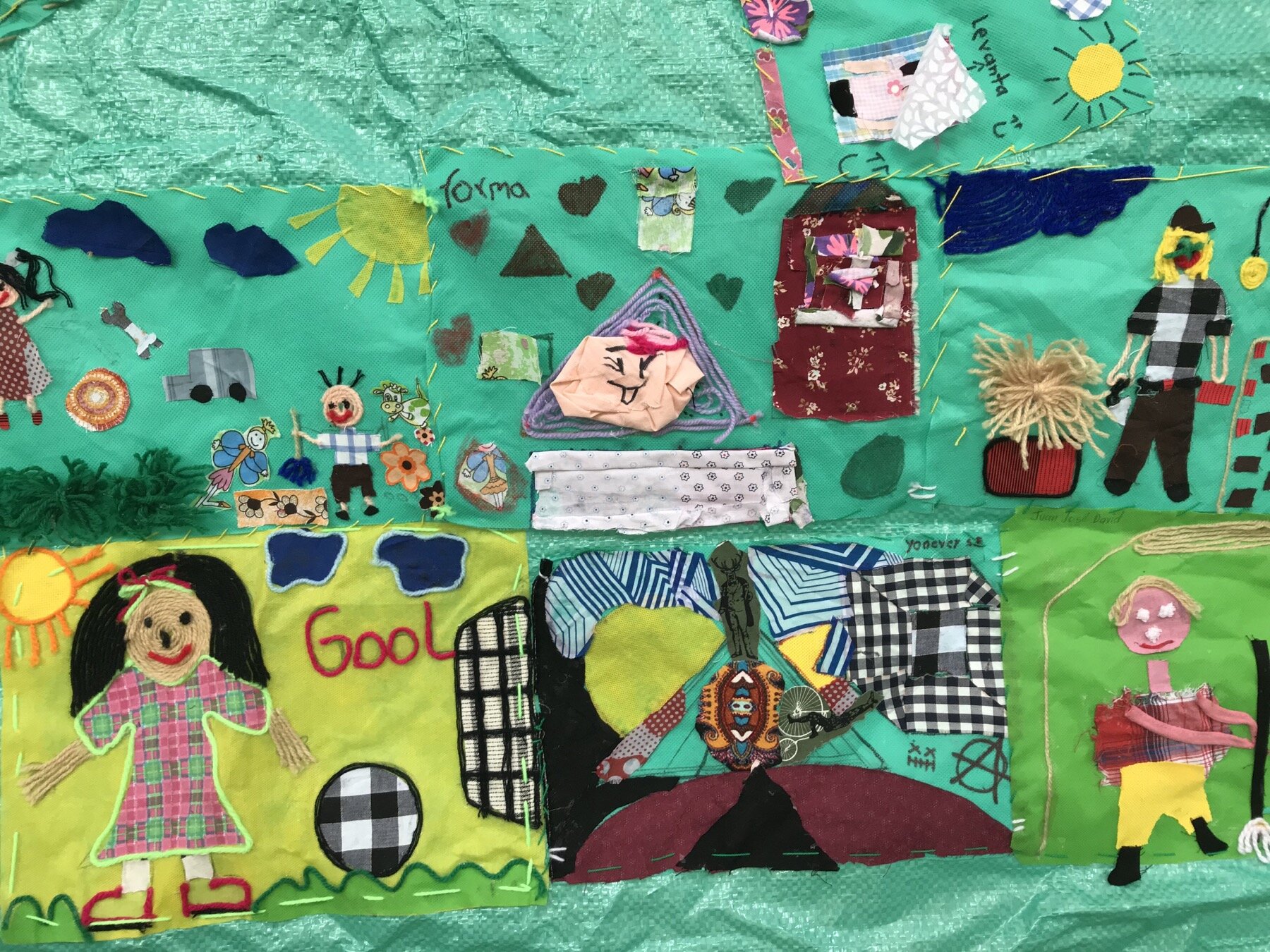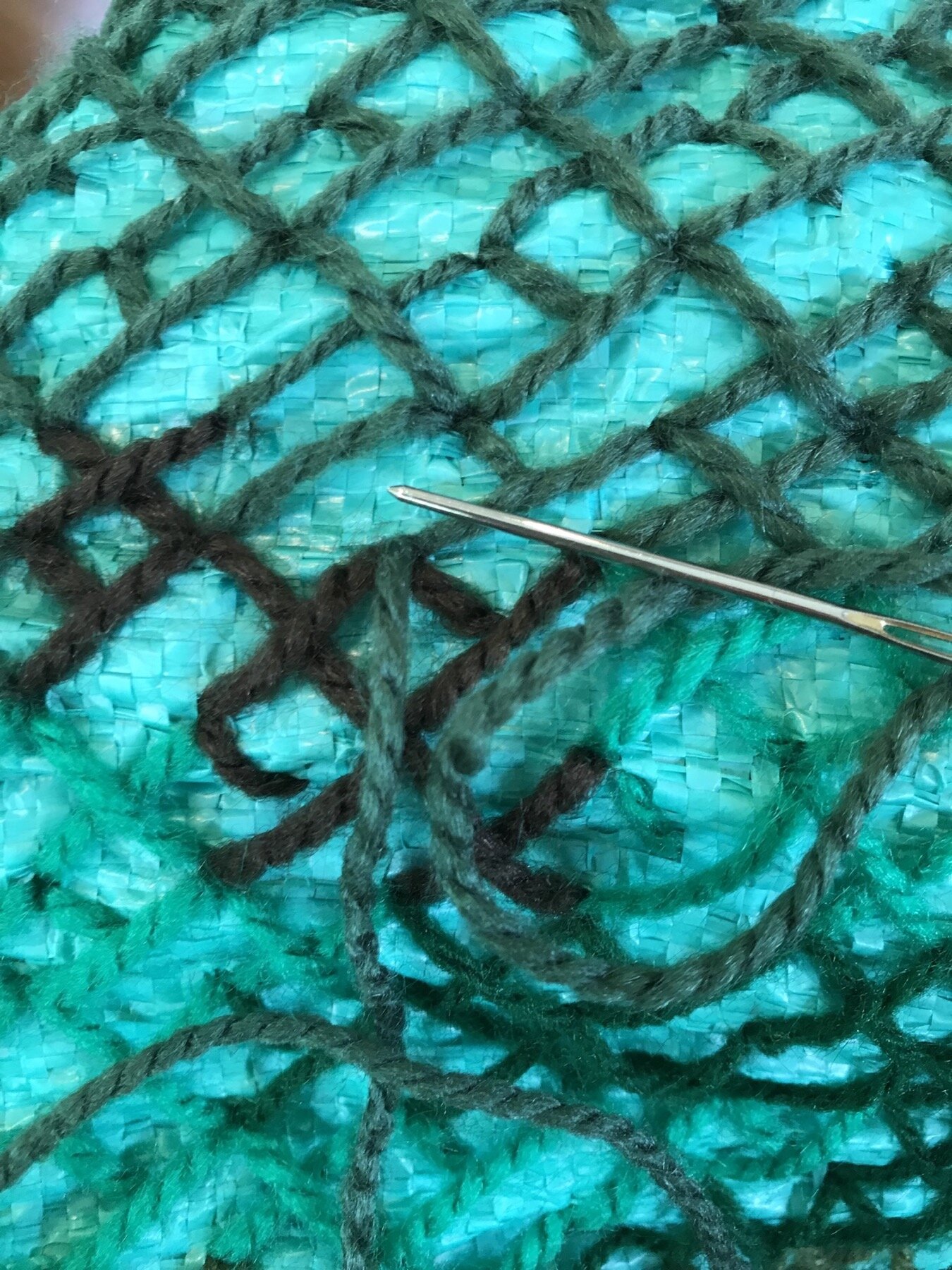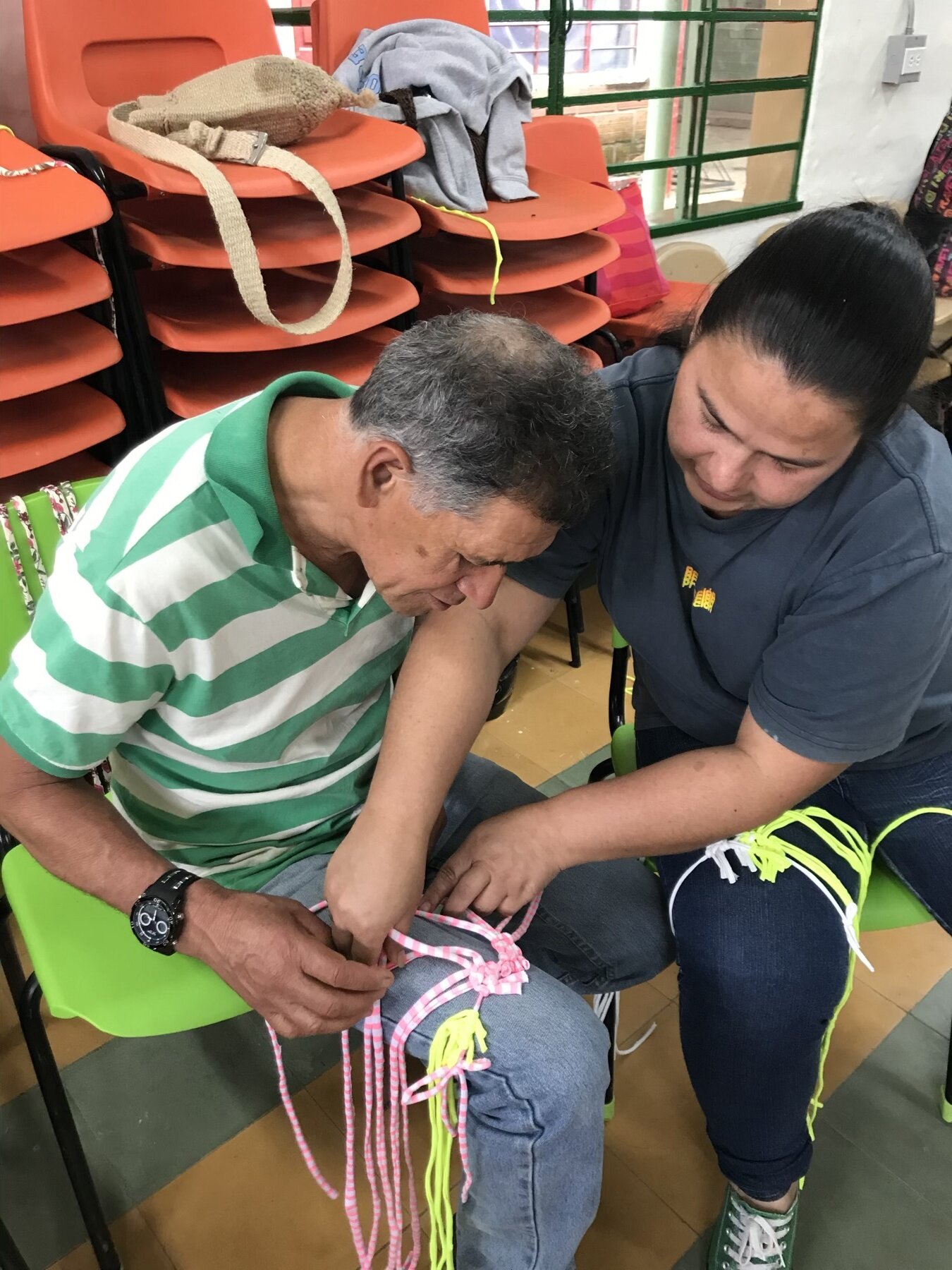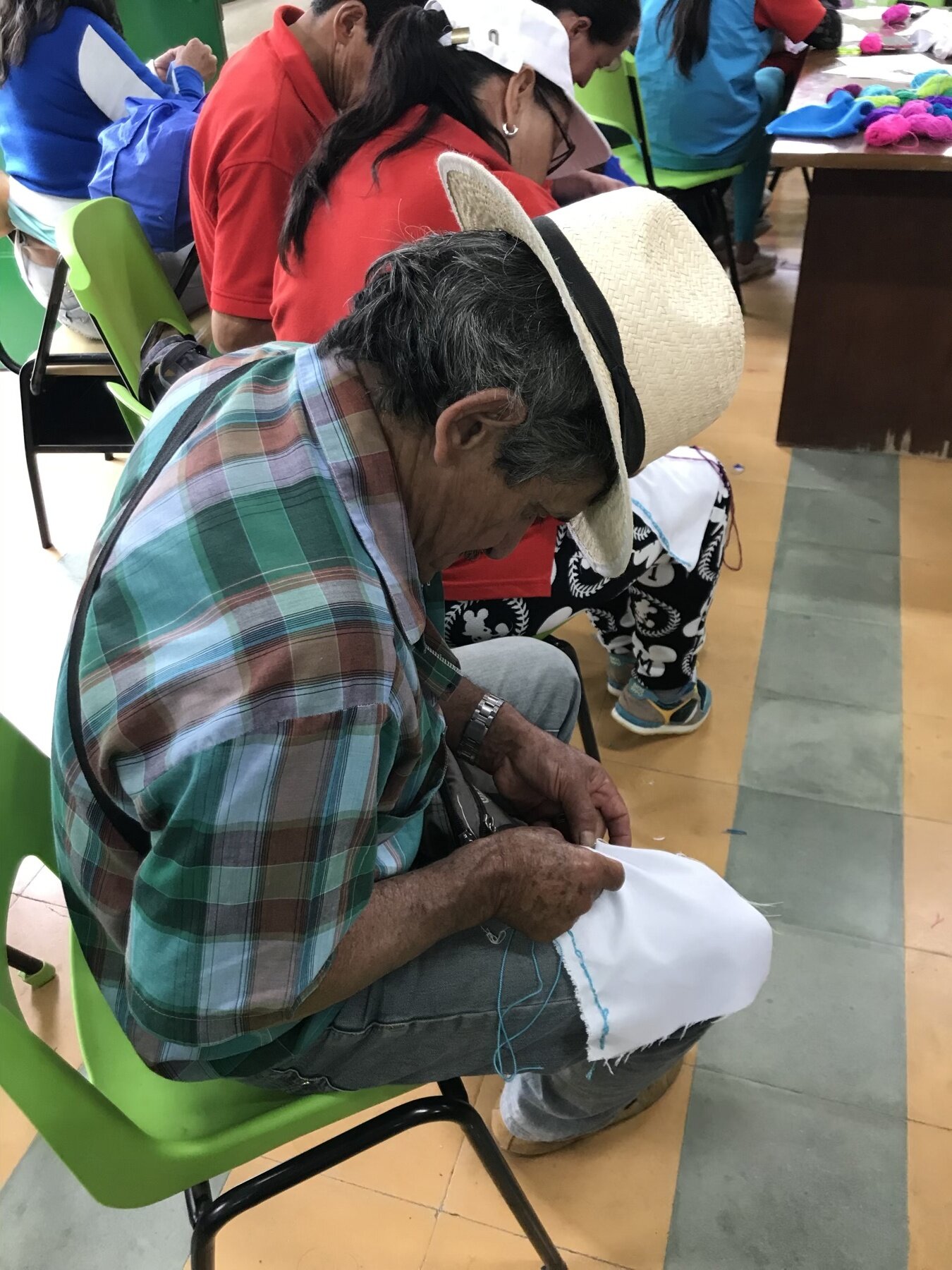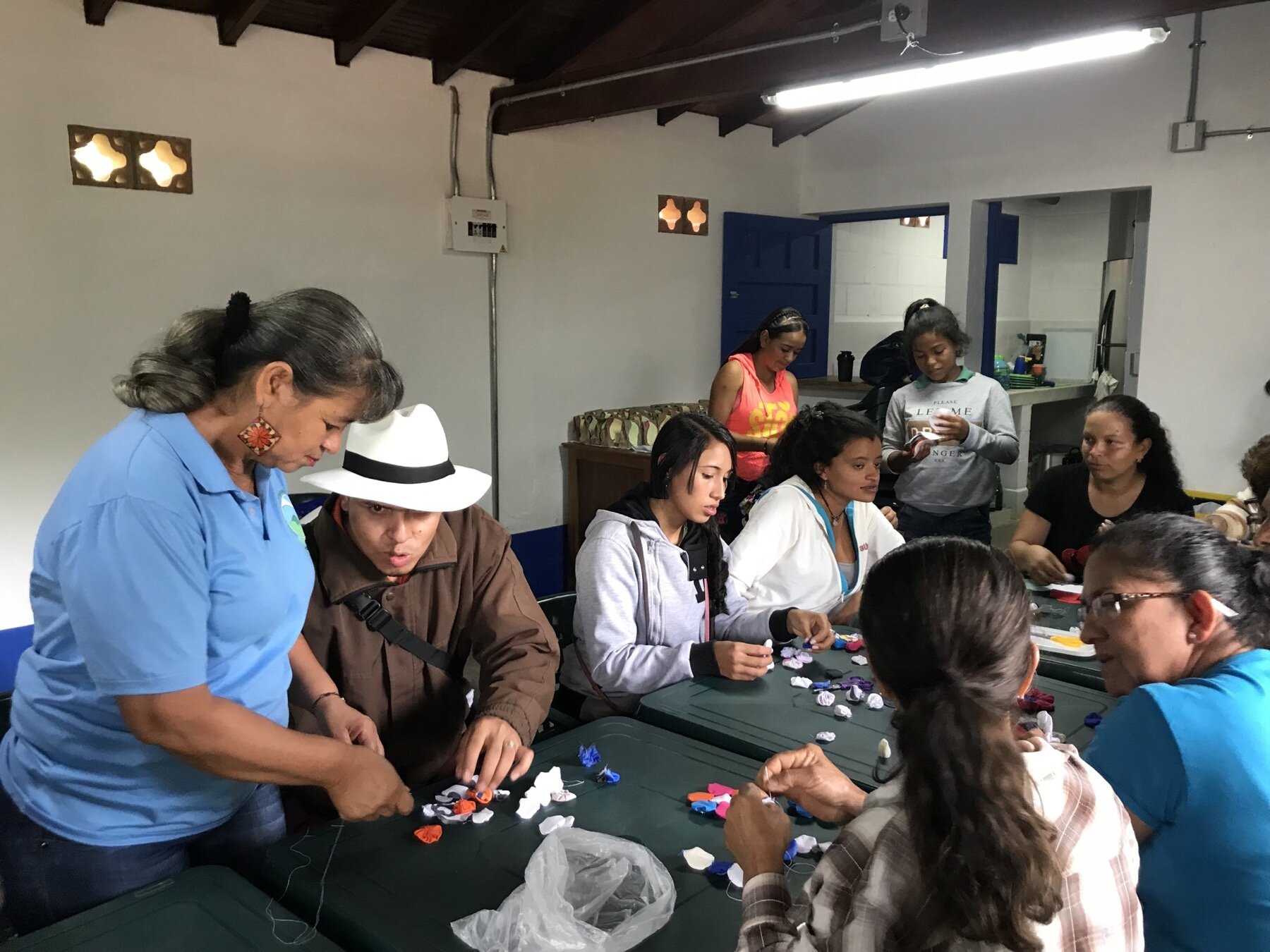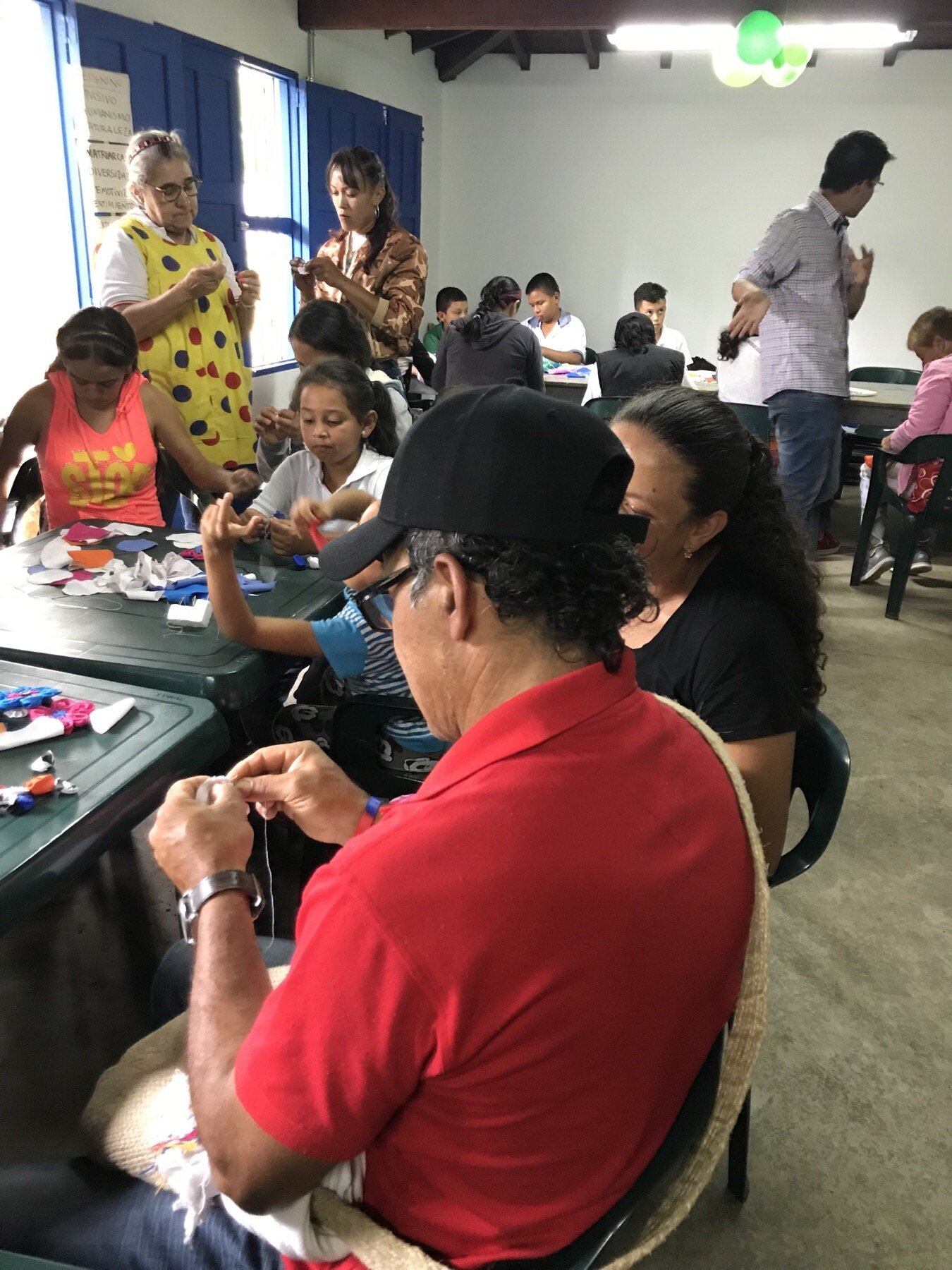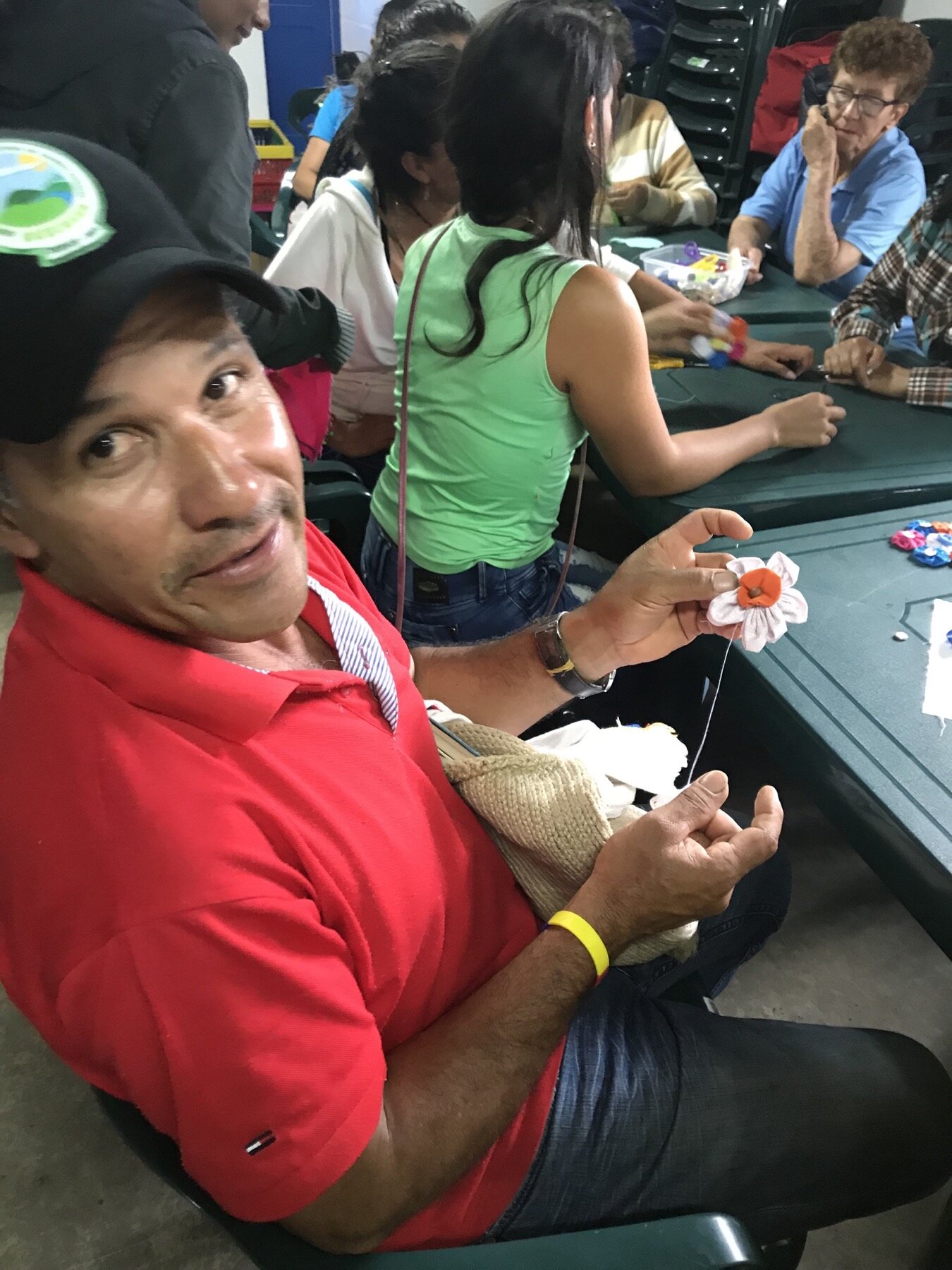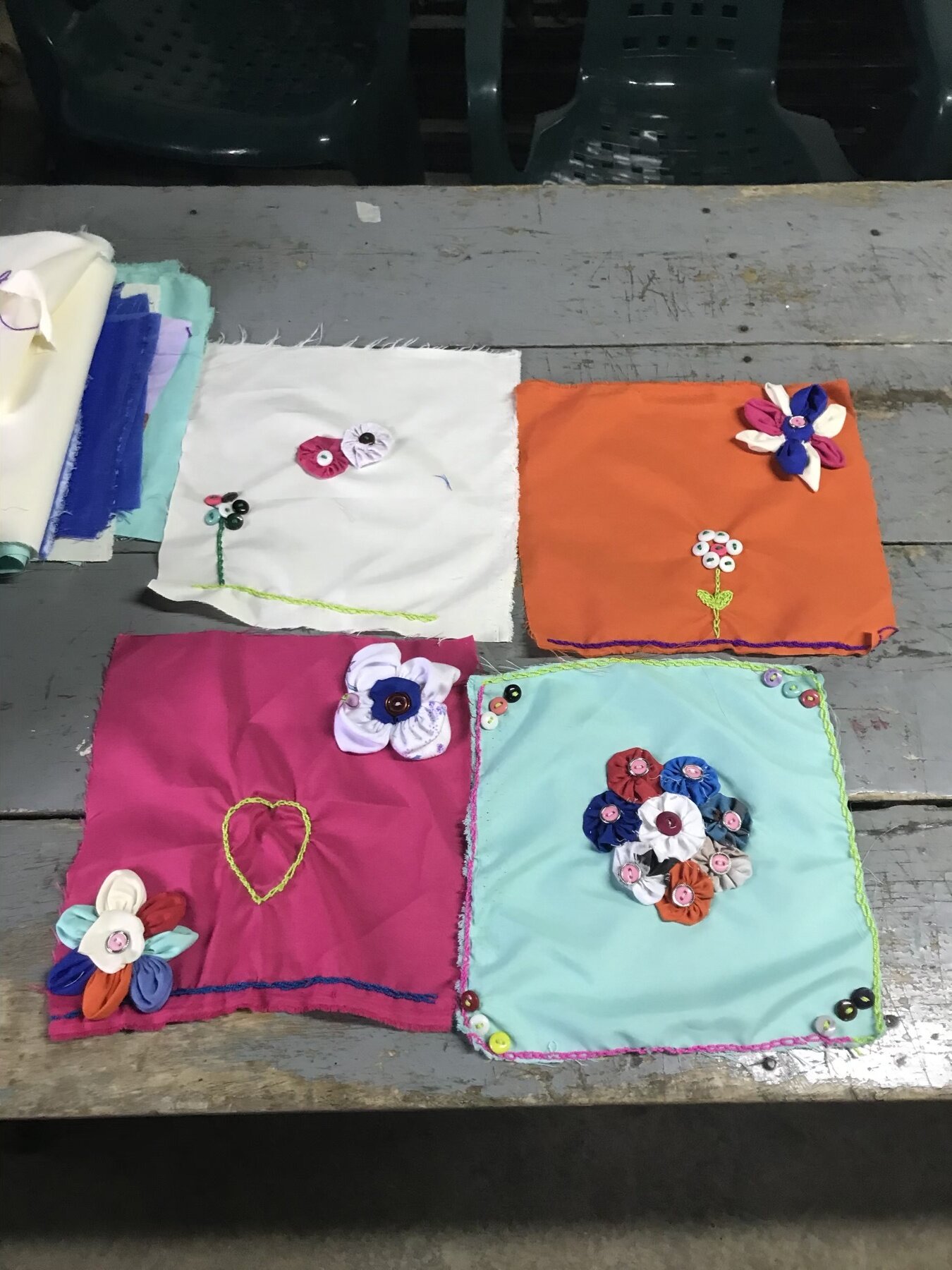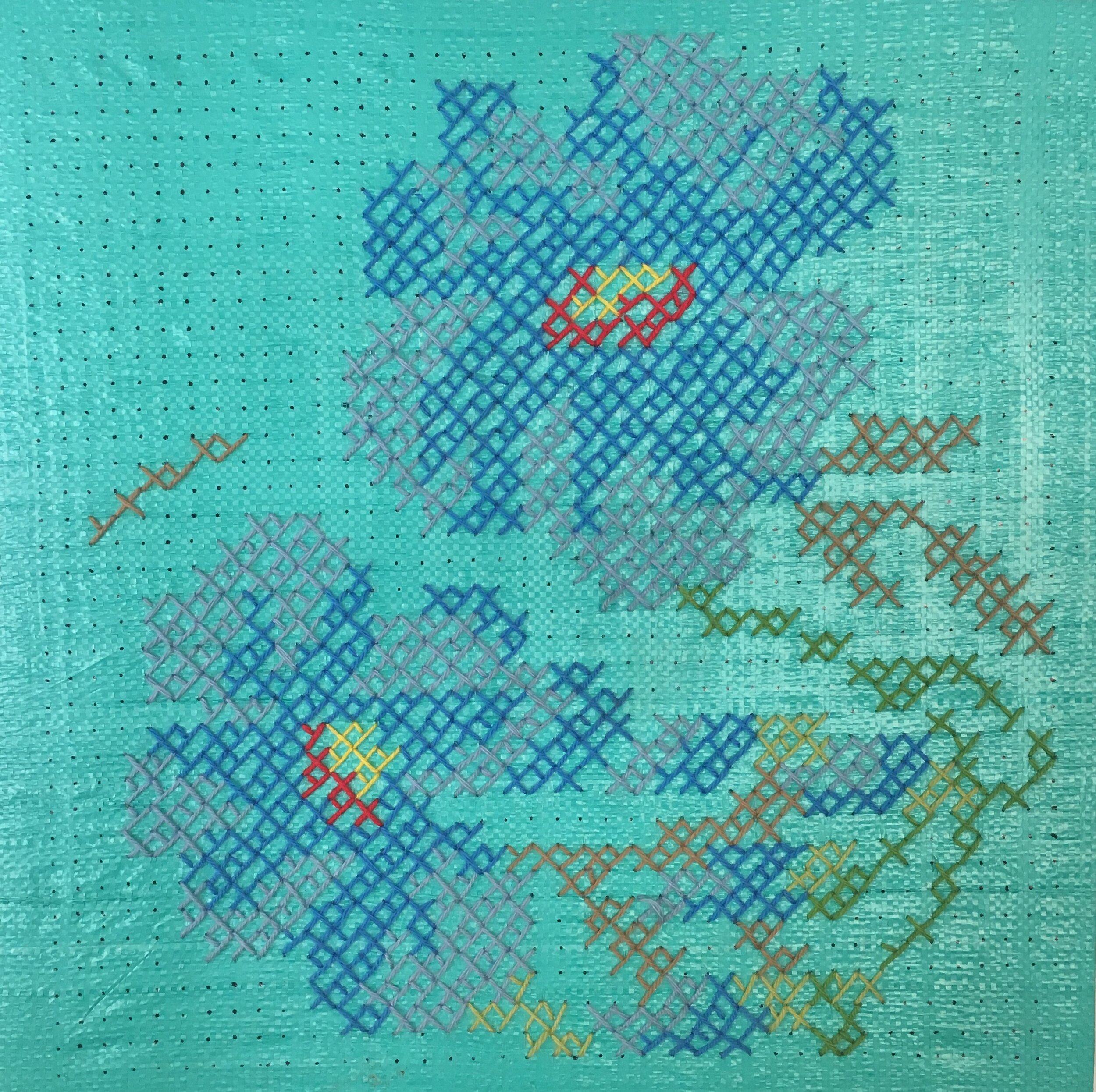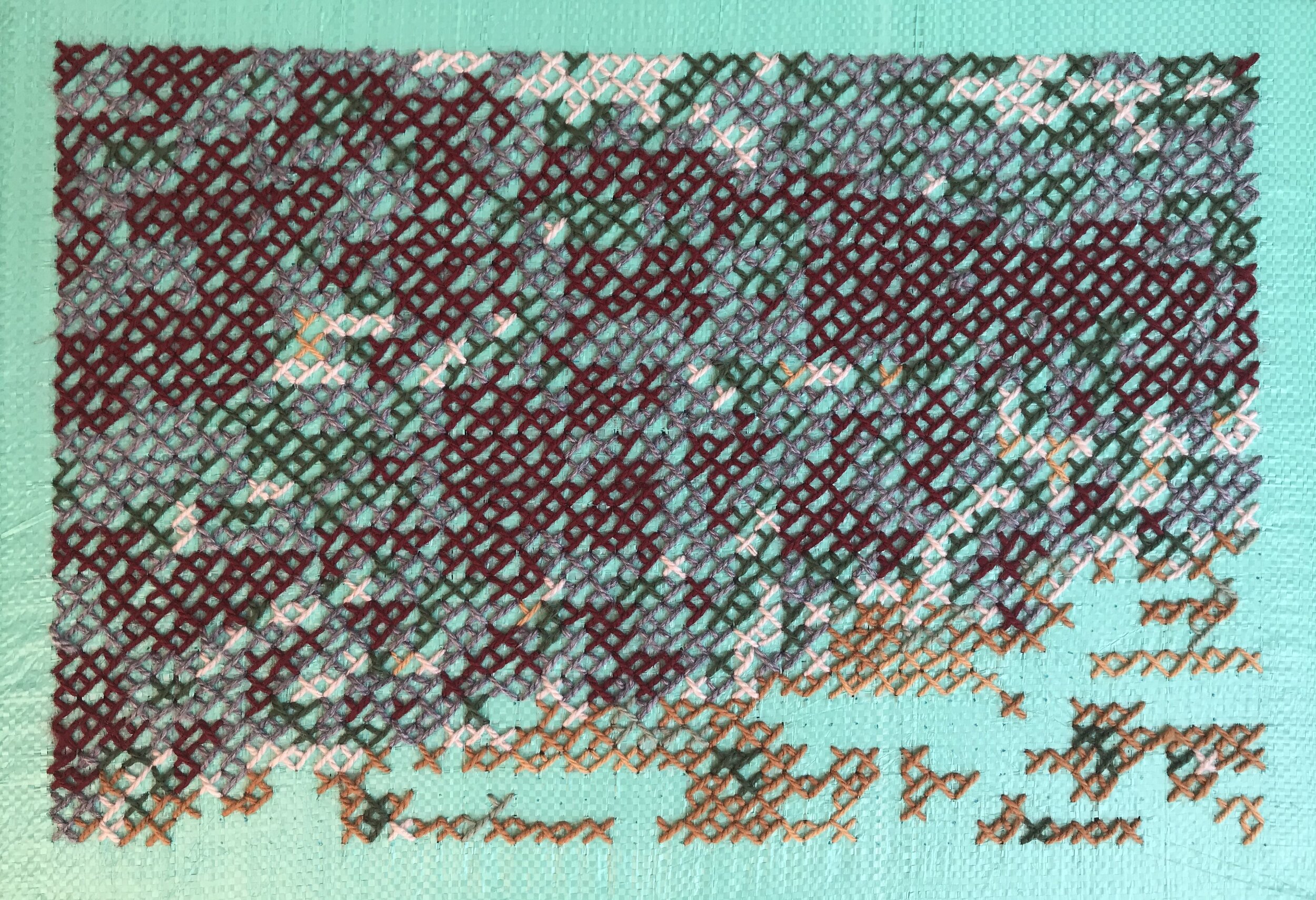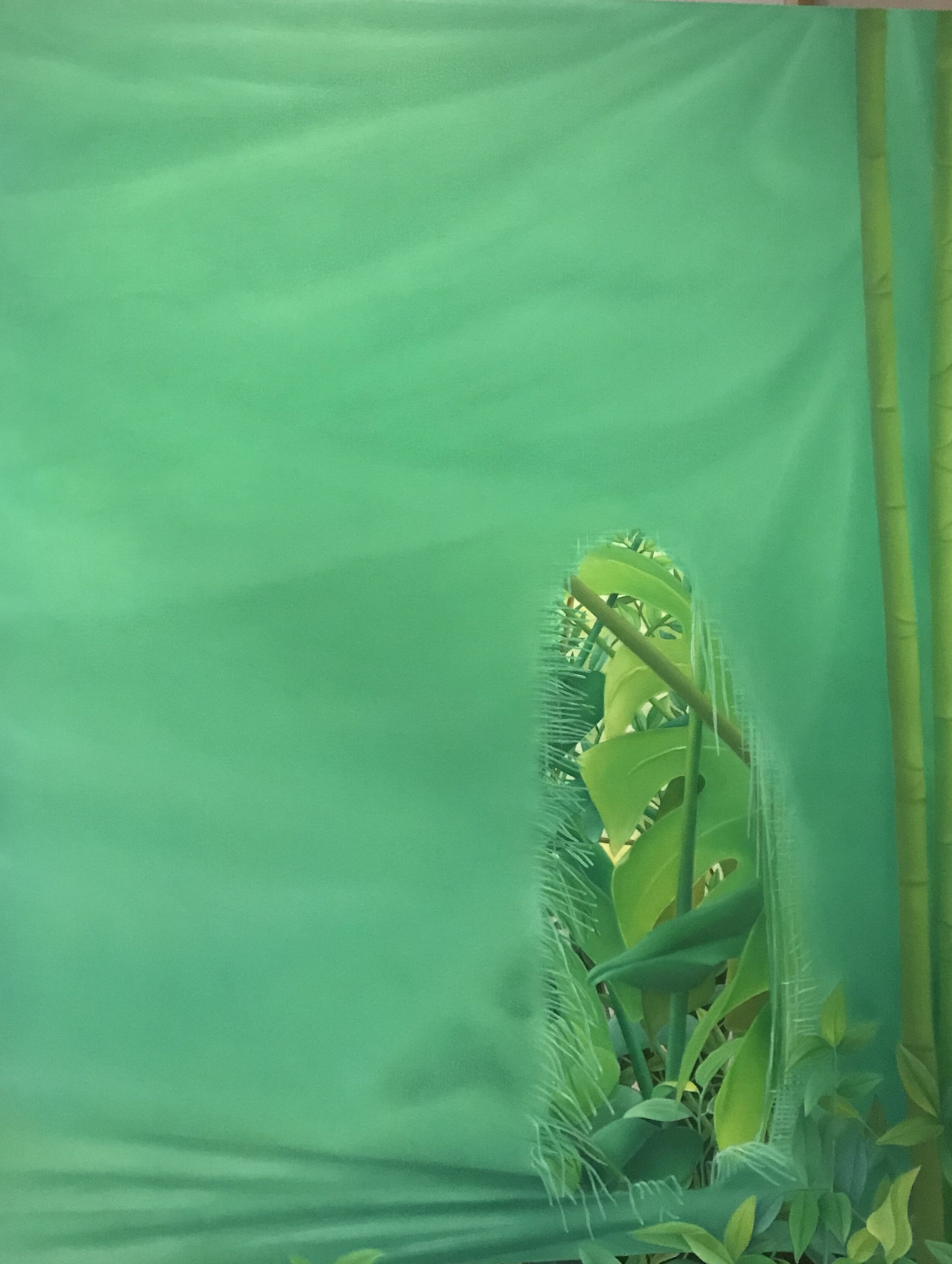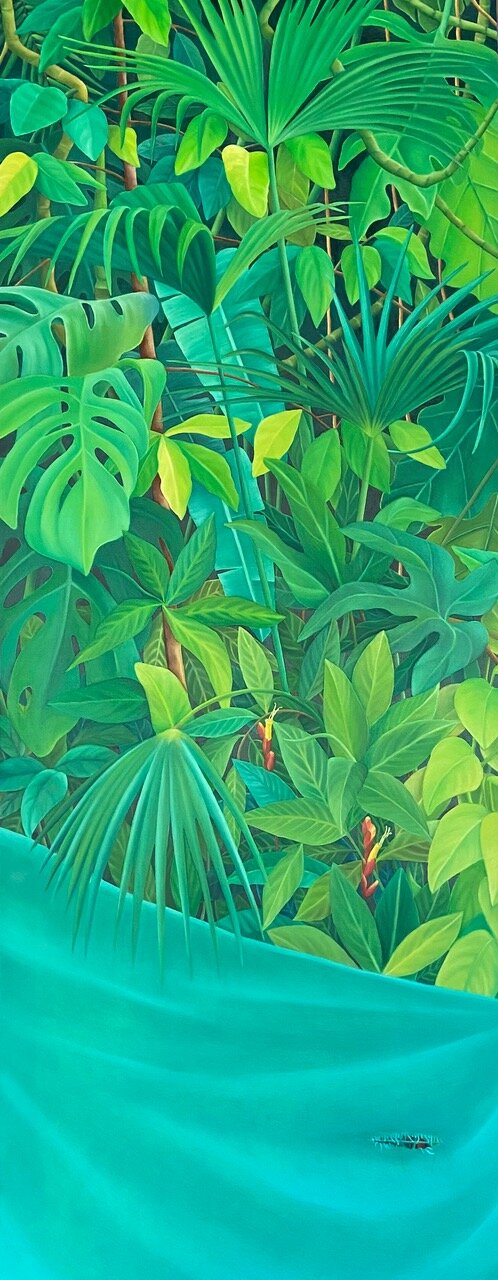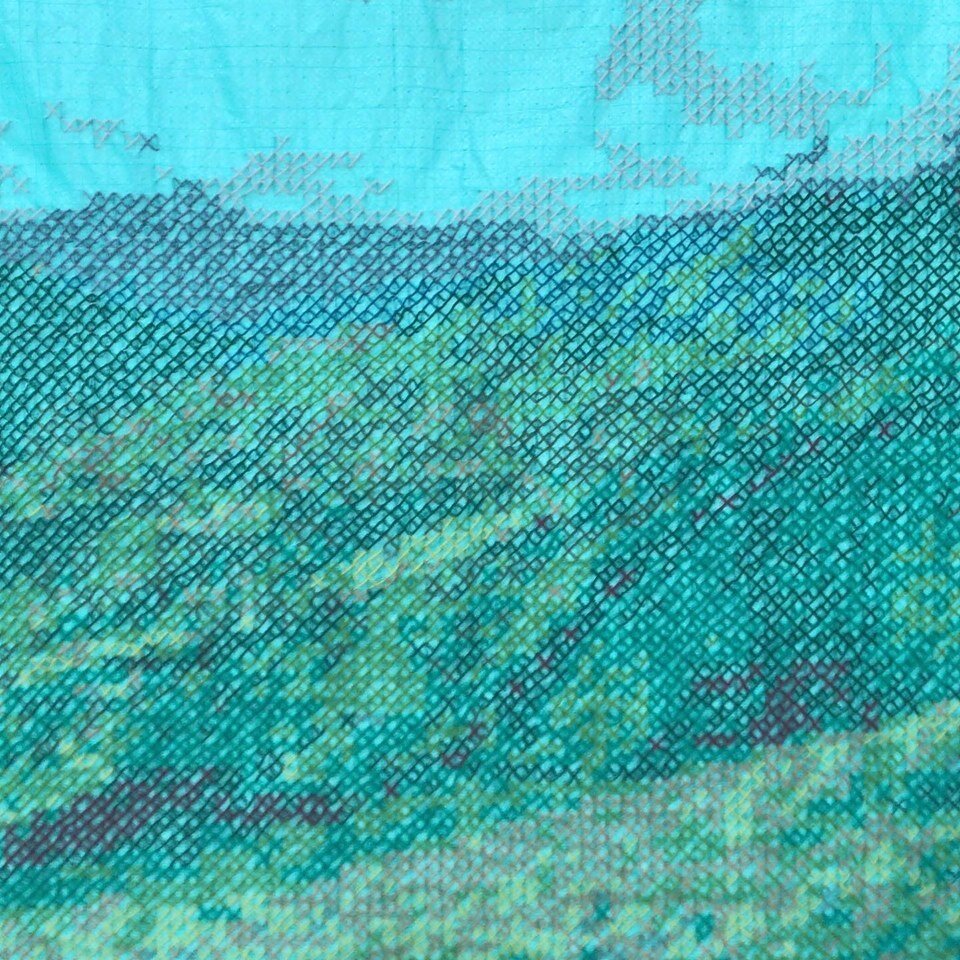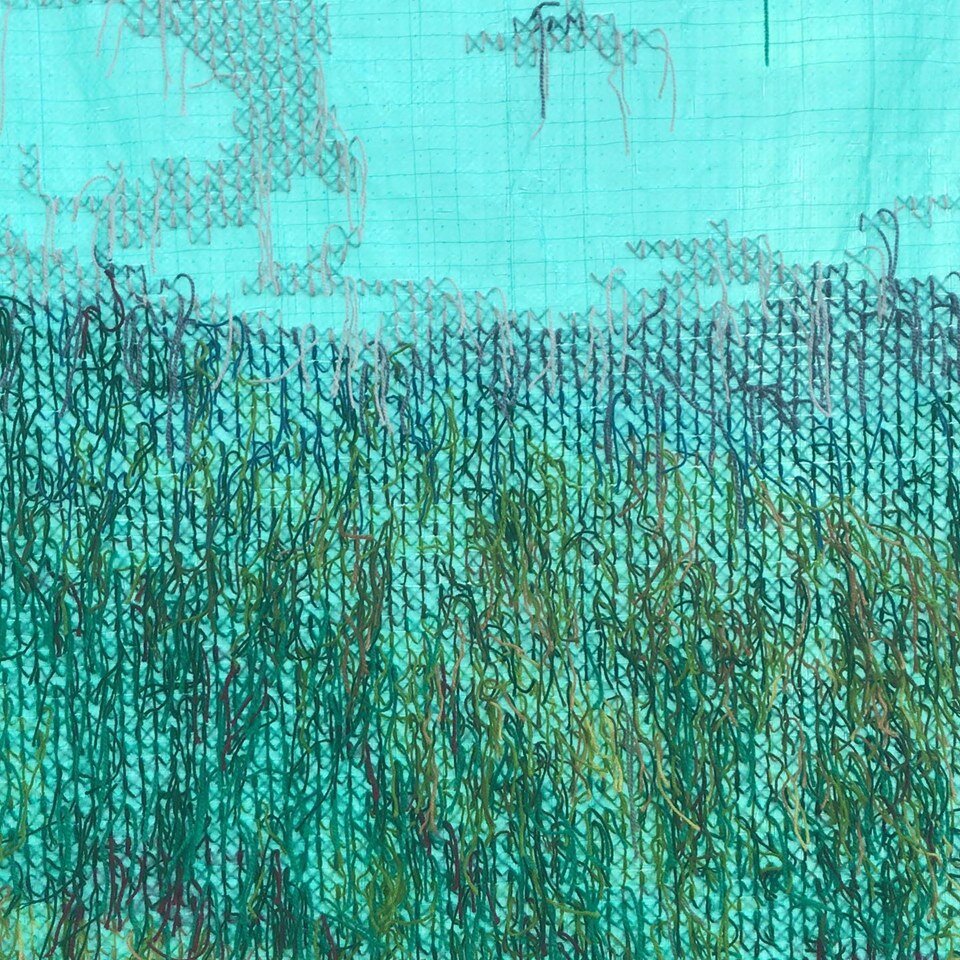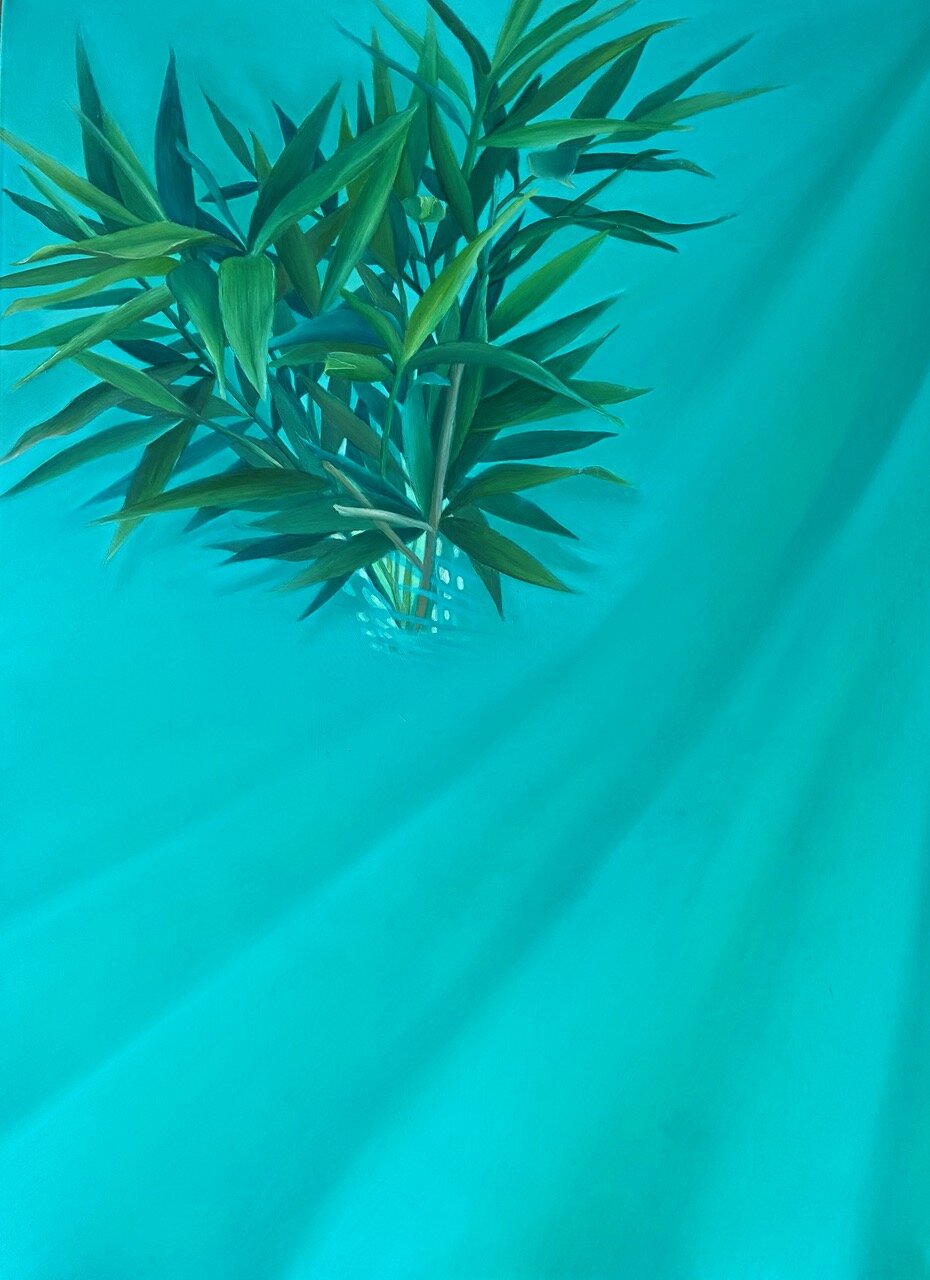Cross (Stitch) Point, EMBROIDERY LANDSCAPE
Embroidery with XY stitch using wool on synthetic fabric used in construction sites.
180x800 cms
2018
Cross (stitch) Point
The horizon of Ana Isabel Diez
by Conrado Uribe, content director at Creative Connections, contemporary art curator
Ana Isabel Diez's interest in exploring the intersections between practices, genres, landscape and social symbols takes shape in CROSS (STITCH) POINT (2018). In this work, the “cross stitch” embroidery technique is redesigned in a poetic act that makes the XX stitch (the genetic symbol for women) become XY (the genetic symbol for men). With this kind of embroidery, a work of more than 8 meters long is produced and the chosen support is the synthetic green fabric used to delimit and separate the construction works. It represents a landscape that, due to its epic character, evokes the iconic painting “Horizons” (1913) by Francisco Antonio Cano. The traditionally masculine world of construction is linked and reconciled with the feminine through embroidery.
In Cano's painting, a farmer directs his family with a gesture in which he points his hand to a mountainous and sunny landscape, typical of the Colombian Andes. The hand seems to connect with nature and at the same time draw the contours of the clouds in the air. His characteristic position has served to compare that man with the Adam that Michelangelo Buonarroti painted in the frescoes of the Sistine Chapel. In the other hand, the man carries an instrument of control and domination: "the ax that my elders left me by inheritance"(1). His partner, in a submissive attitude, looks into infinity while carrying a baby in her arms. The child also looks at what that "paterfamiliae" points out.
In CROSS (STITCH) POINT, as is typical in the artistic strategies of Ana Isabel Diez, there is a subtle questioning of some of the dominant patriarchal values that are recognized in that iconic painting. The hand of a man is no longer the central figure. Here, a woman's hand proposes, through the action of embroidering with that new XY stitch, a revision of the way we relate to landscape in contemporary times: what representations of nature do we need today? the social, economic and political schemes of the patriarchal society have led us to the global ecological crisis that we are facing as a species. We need other perspectives that can show us a different way of inhabiting the world. We need other horizons.
What can we do regarding the violent exploitation of nature and women, exercised simultaneously by the patriarchal society? Diez assumes a courageous and necessary position by working in a committed way around these issues. In her capacity to interrogate and express the world, her practice contributes to provide other sense and meaning to our reality. If we can attribute a profound function to art, it is its ability to question human behavior and generate a broader awareness of our contexts. That is its transforming power. And there lies precisely the power of the work of Ana Isabel Diez.
(1) Words from a poem by Epifanio Mejia for the local anthem, published in 1868.
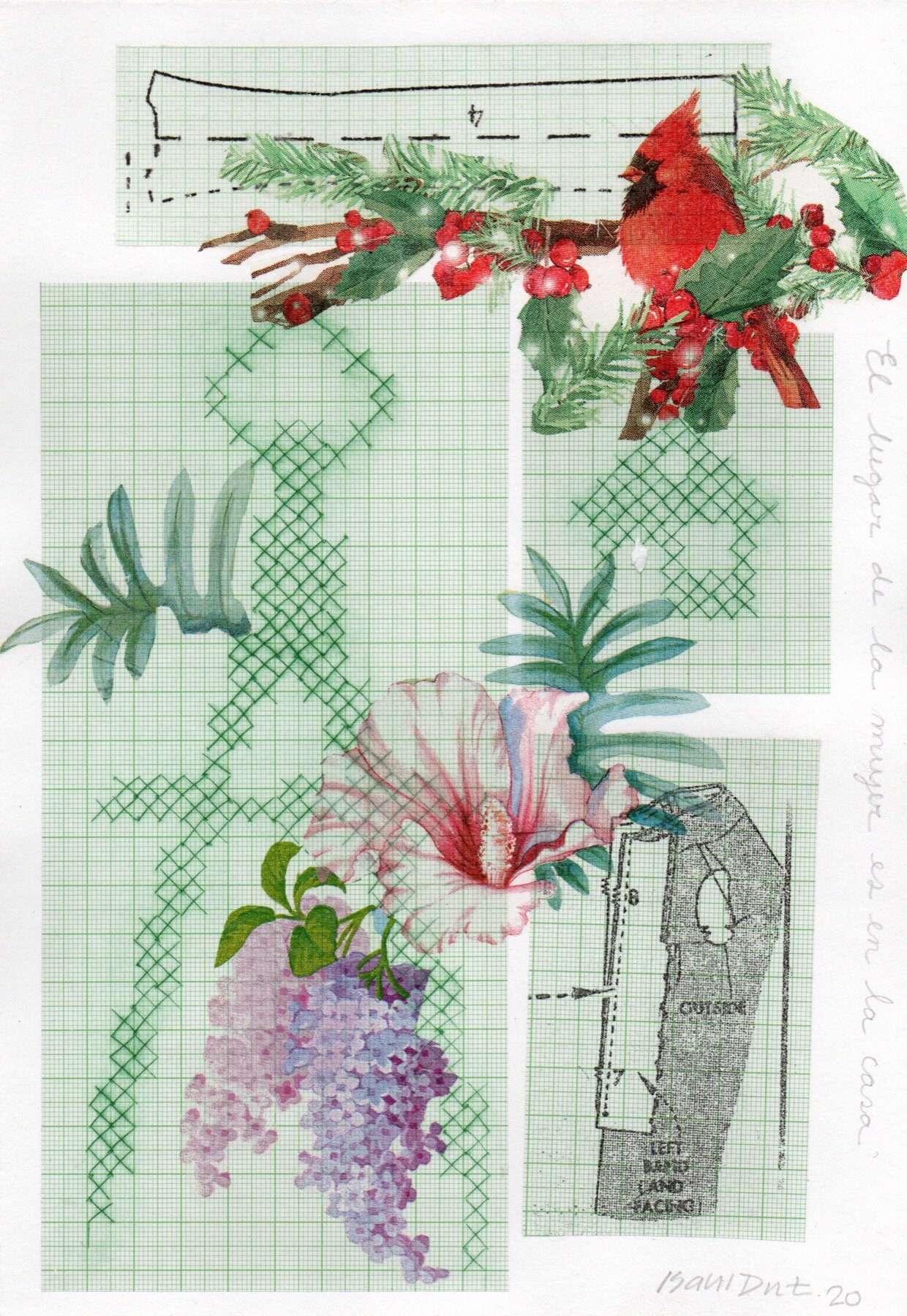
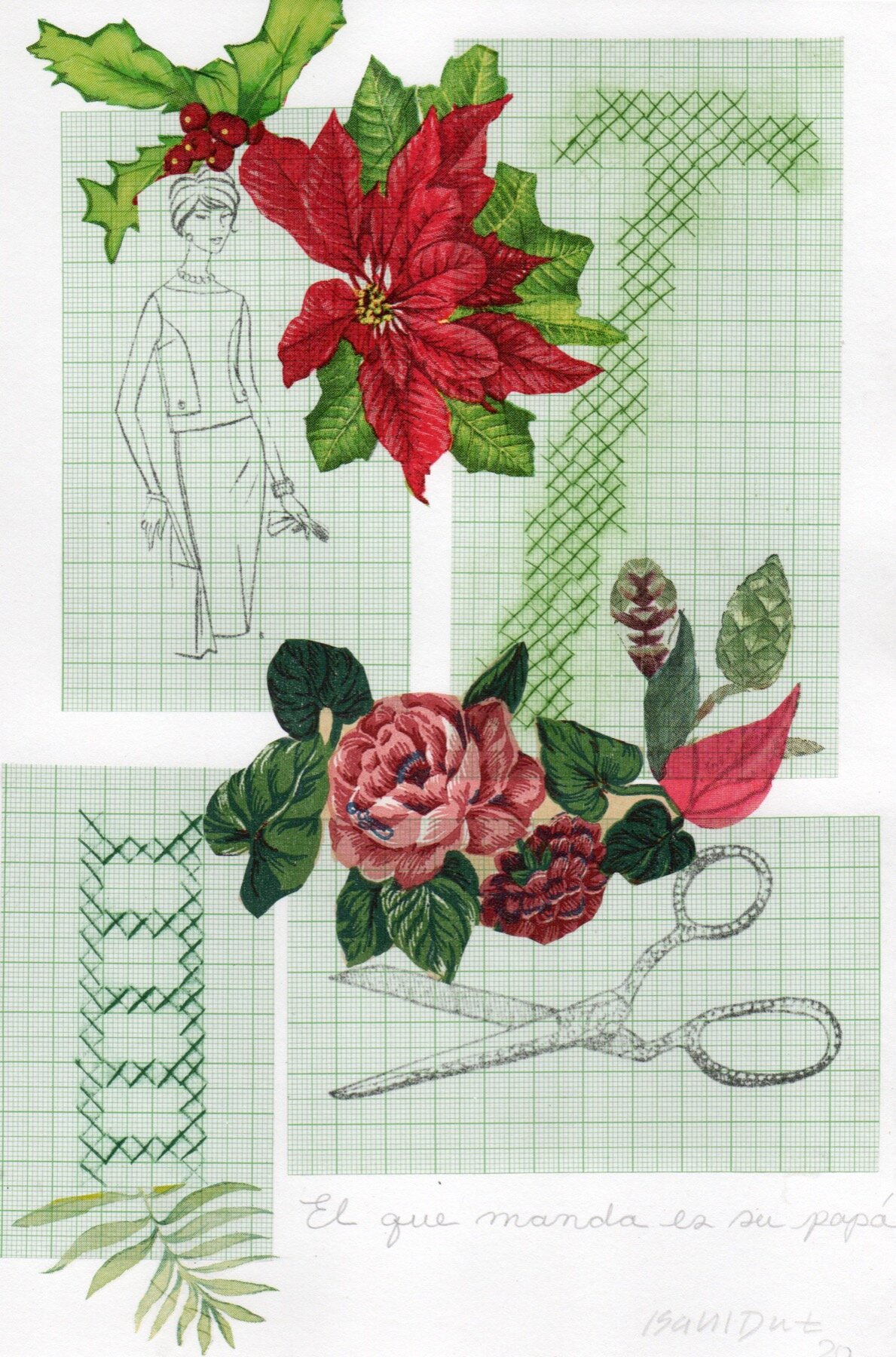
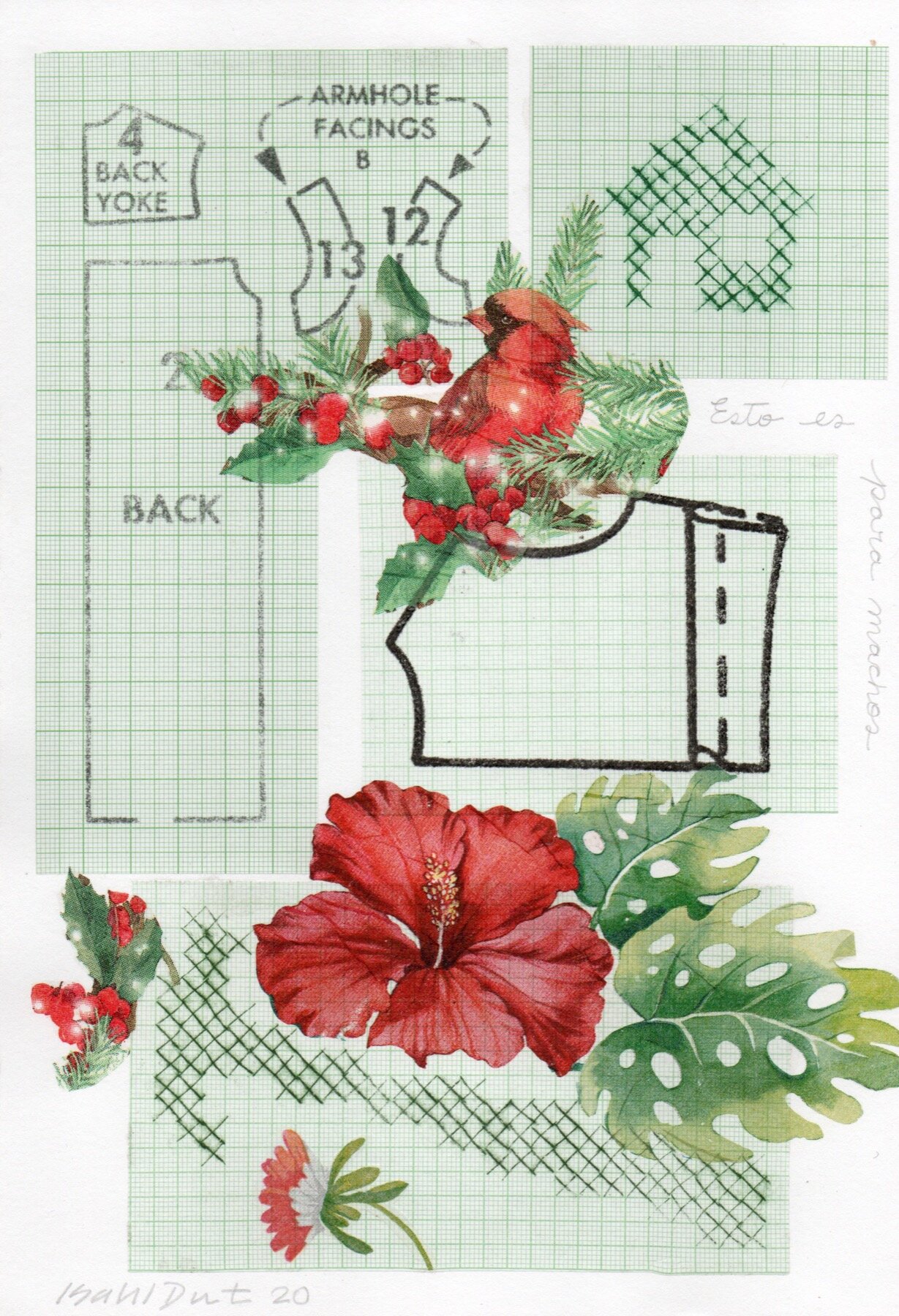
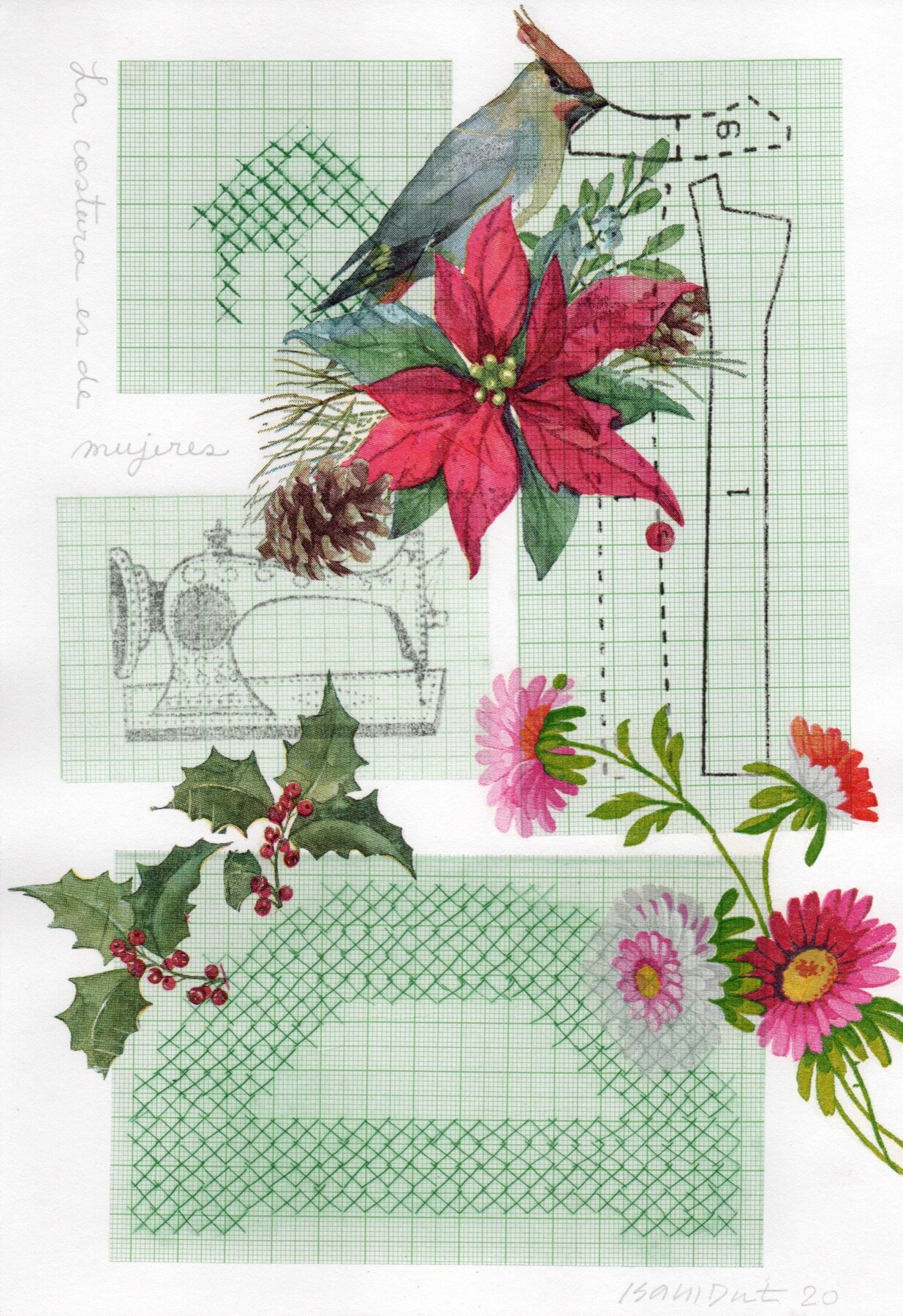
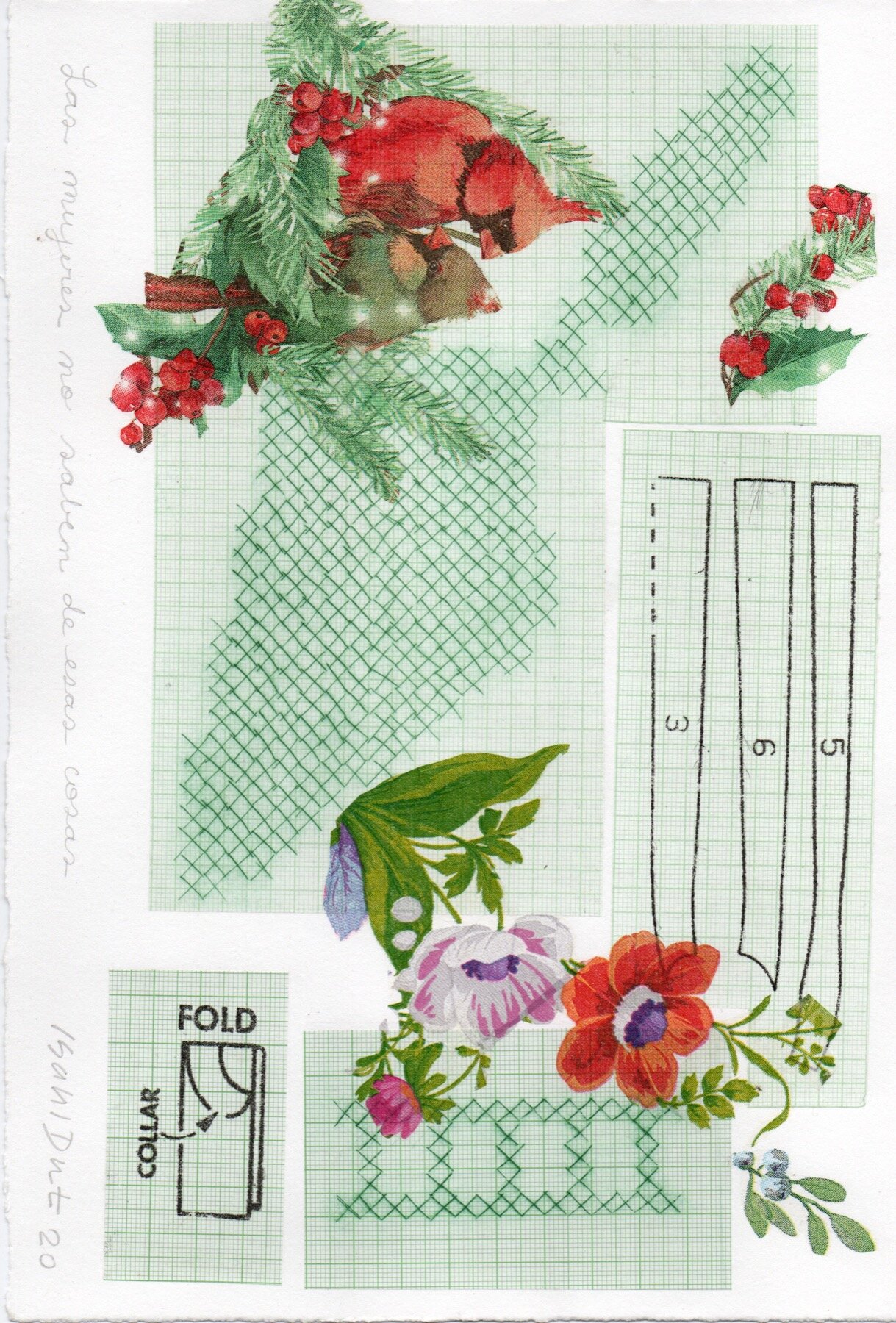
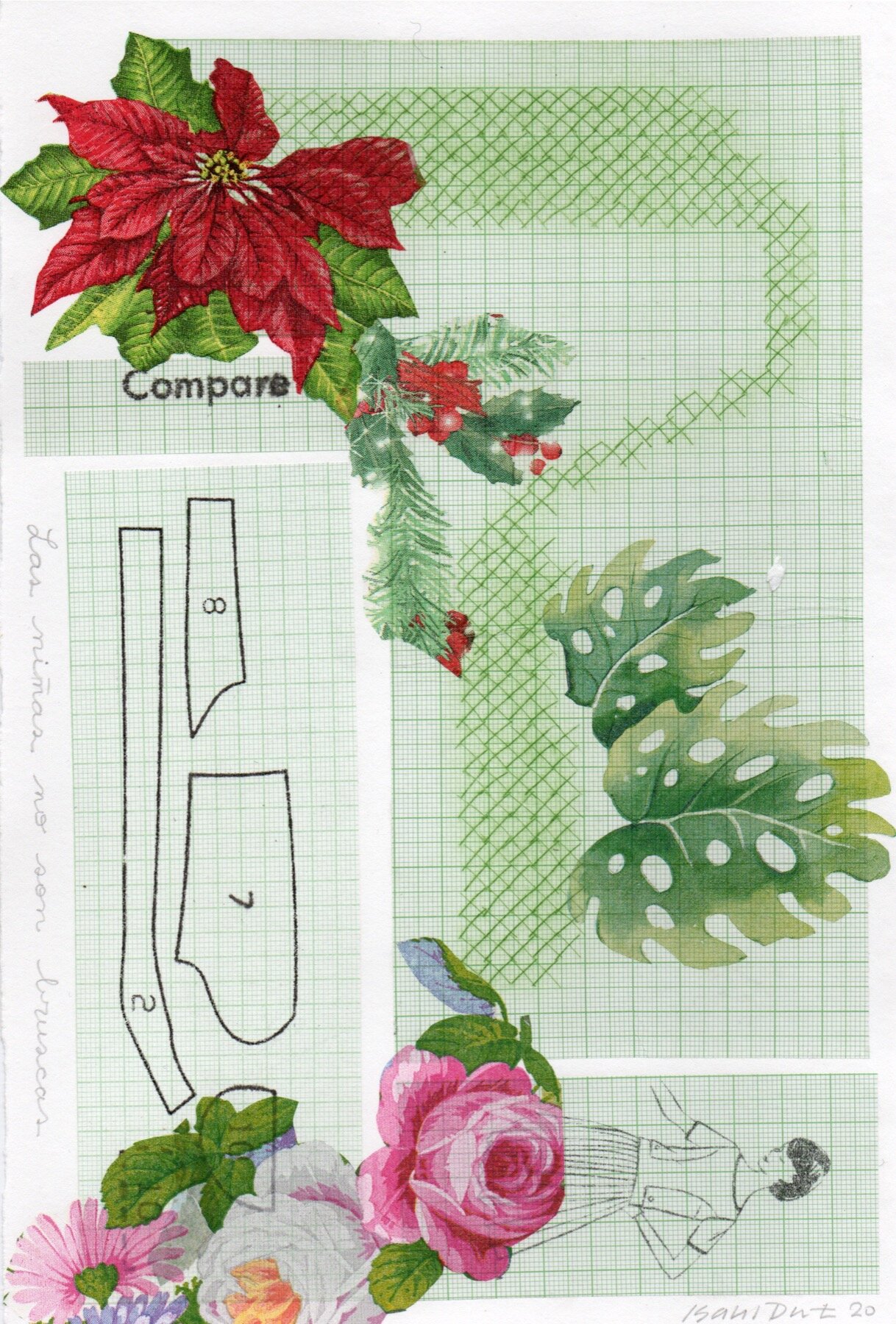
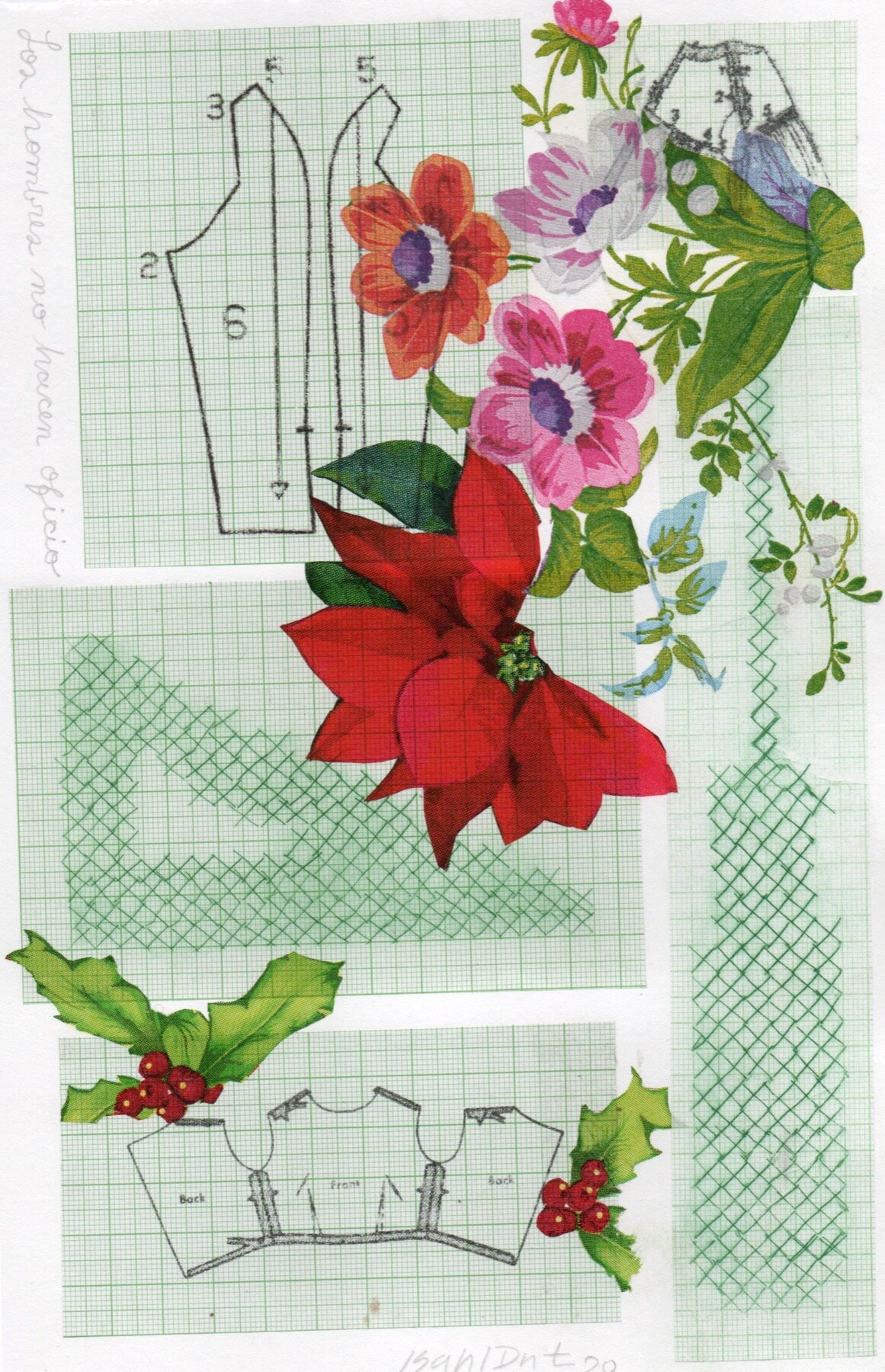
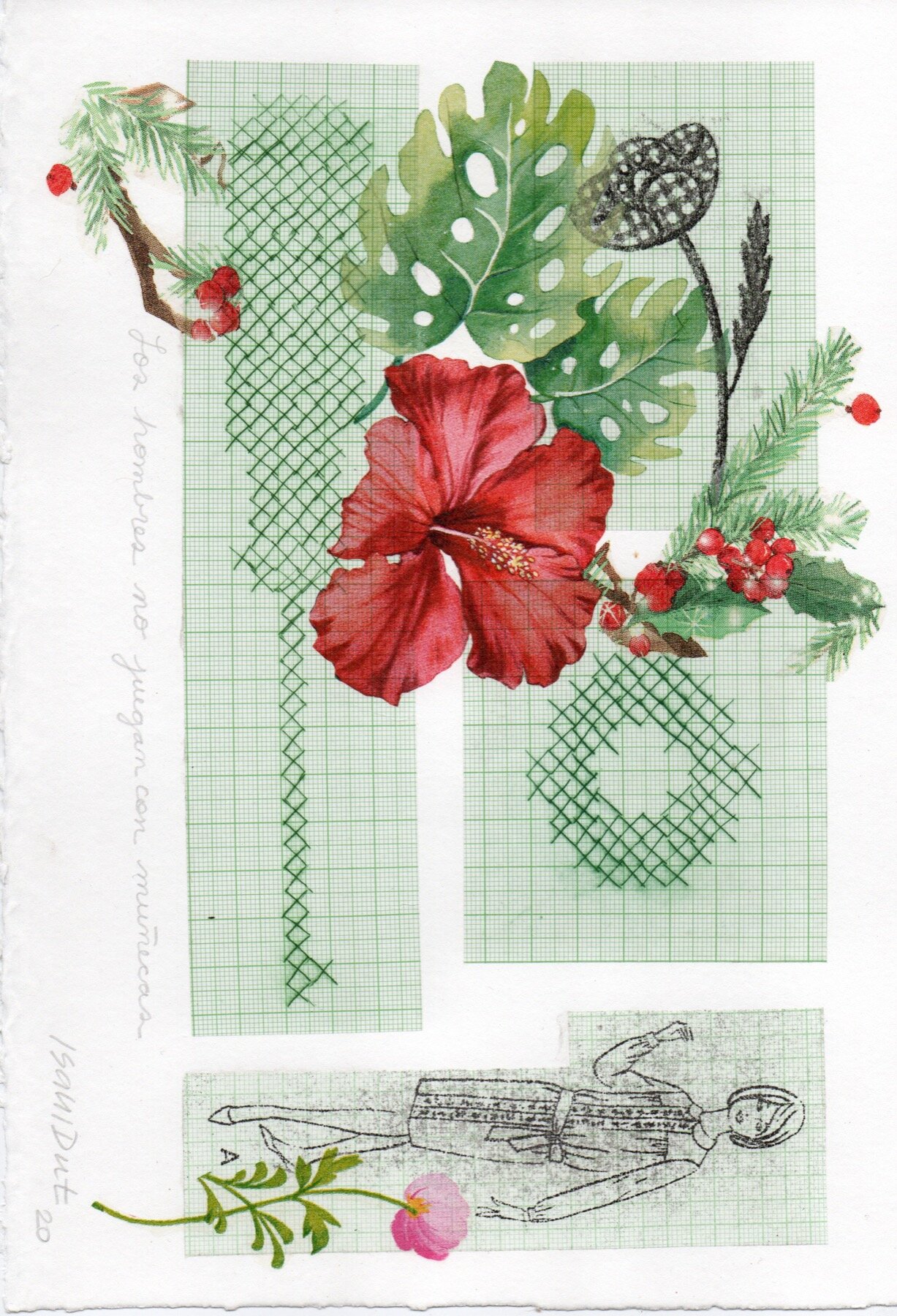
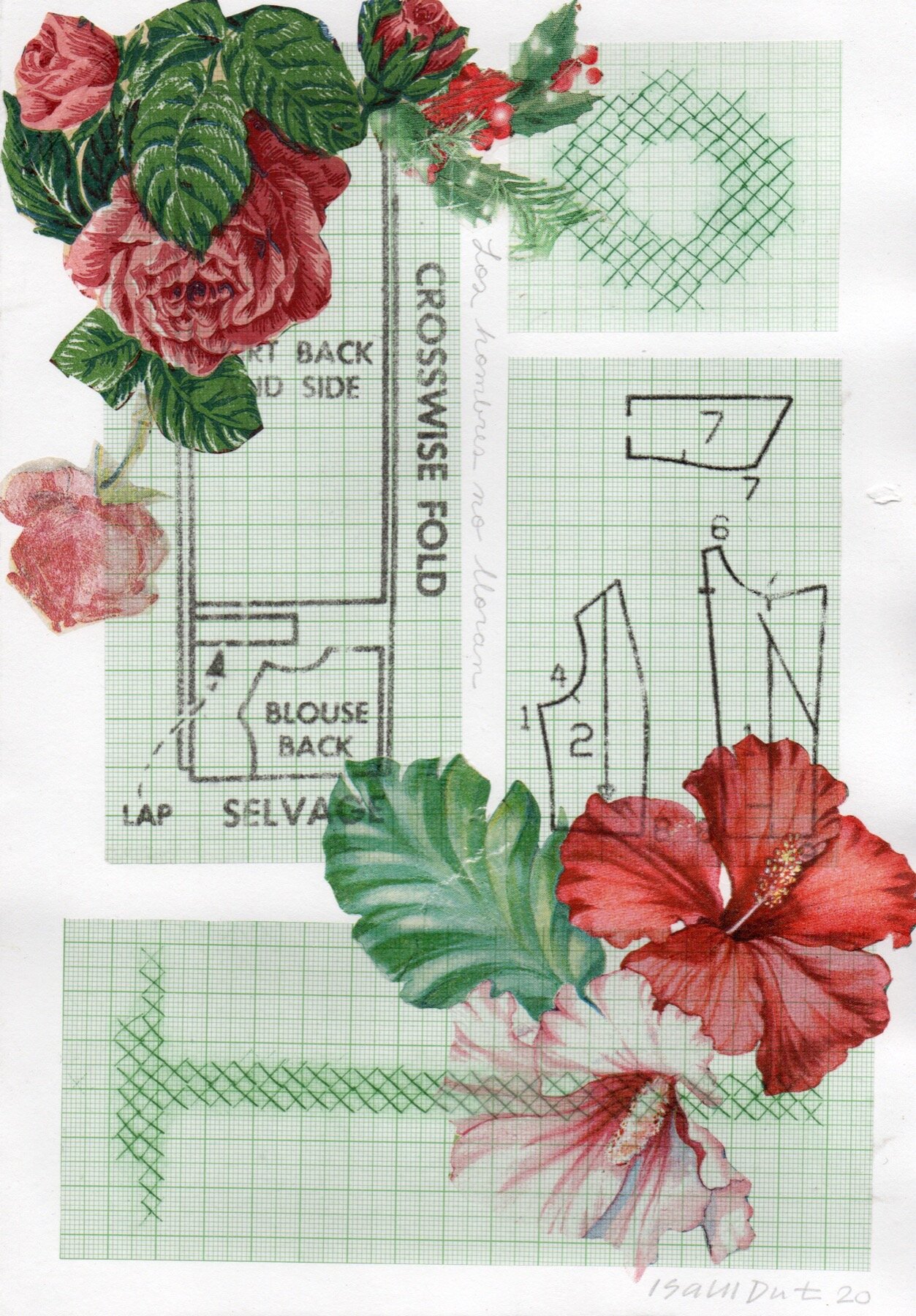
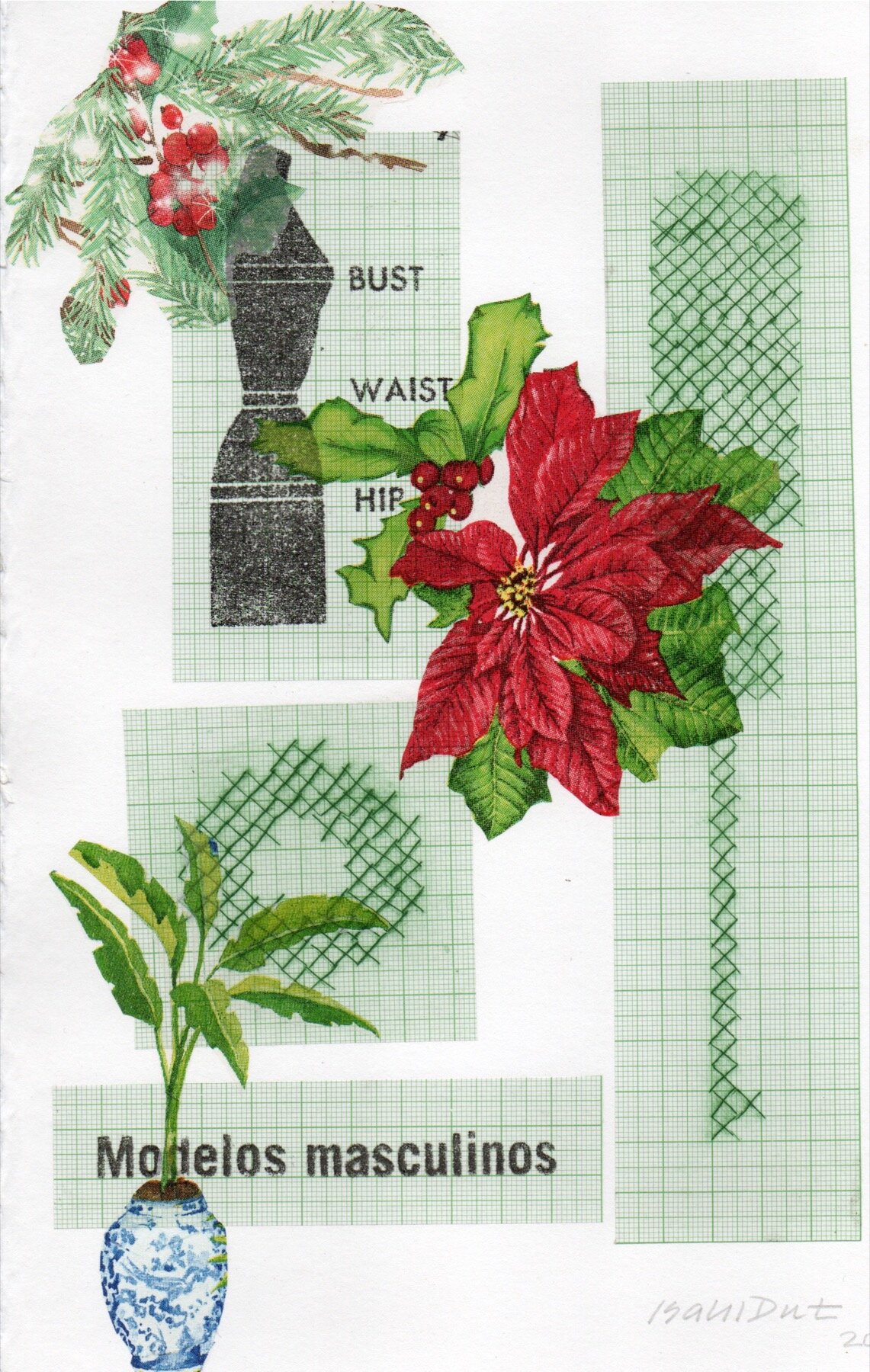
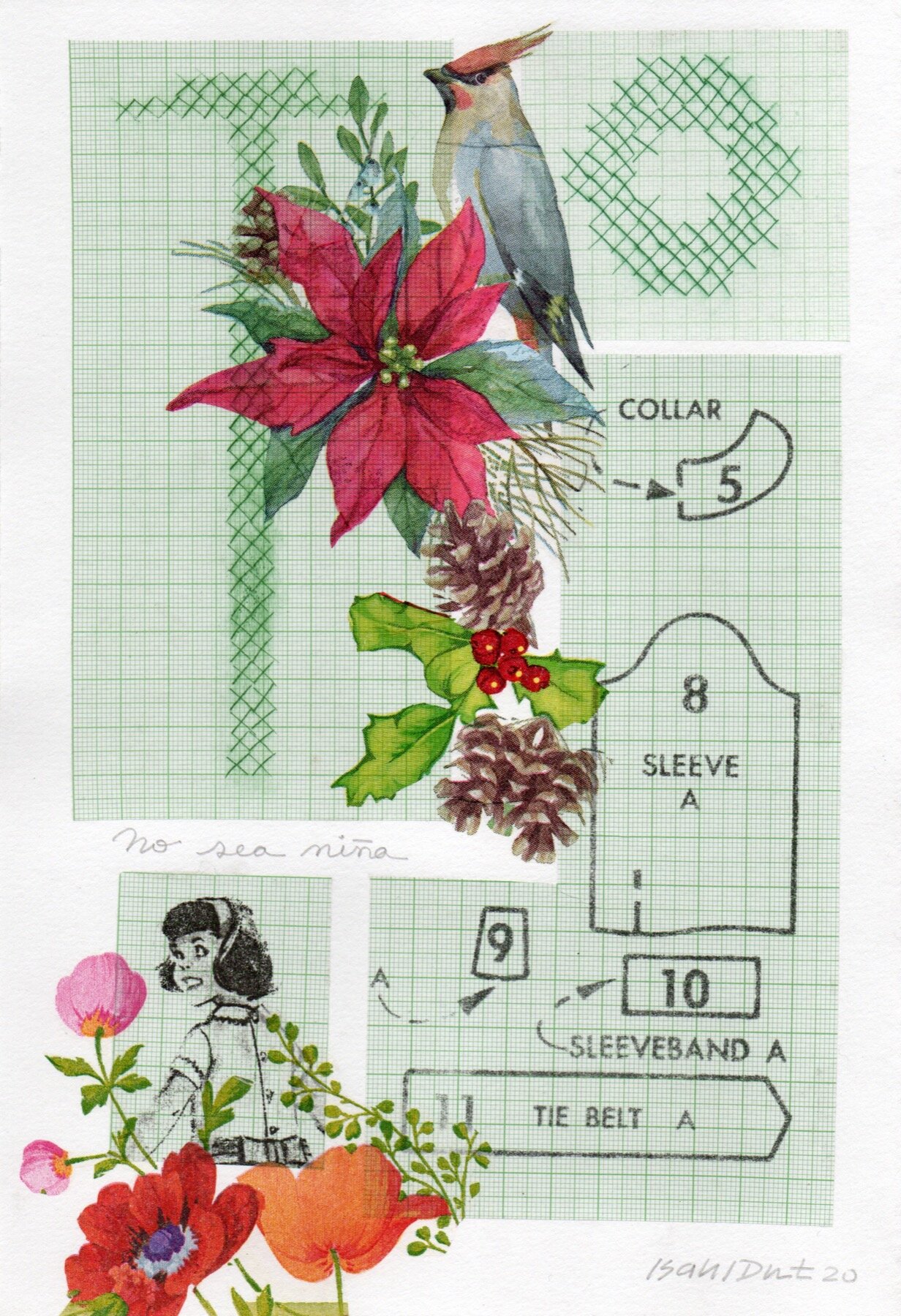
Drypoint, transfer print and chinecollé
20x19 cms
2020
Cross (stitch) Point
by Ana Isabel Diez
The structure of the patriarchal society is determined by the definition of male identity. Although genetically men are defined with XY chromosomes and women with XX, in our society the male identity is supported on denial, differentiation and exclusion processes, primarily the negation of their feminine component.
From ancient times the great power of the union of the masculine and the feminine was recognized. In the book The Banquet, by Plato, Aristophanes talks about the existence of extraordinary androgynous beings. The gods felt threatened by their power and decided to split them in two “to make them weaker and more numerous”. “So, once the original form was cut in half, each one missing his own half would join it”. And later he says: “Our old nature was as described and we were complete. Love is consequently the name for the desire and pursuit of that integrity”.
In this work I try to express the importance of reconciling the masculine and the feminine in our society. I express this through the activities or labors assigned to each gender:
Masculine: construction
Feminine: weaving, embroidering
Therefore, I embroider plastic woven fabric used for enclosing construction sites. The stitch I use is XY instead of the regular cross point XX, as a clear reference for the female part of men and the importance of living in harmony with it, instead of hiding or denying it.
Artistic workshops | Crossing point
Workshops conducted by Ana Isabel Diez
